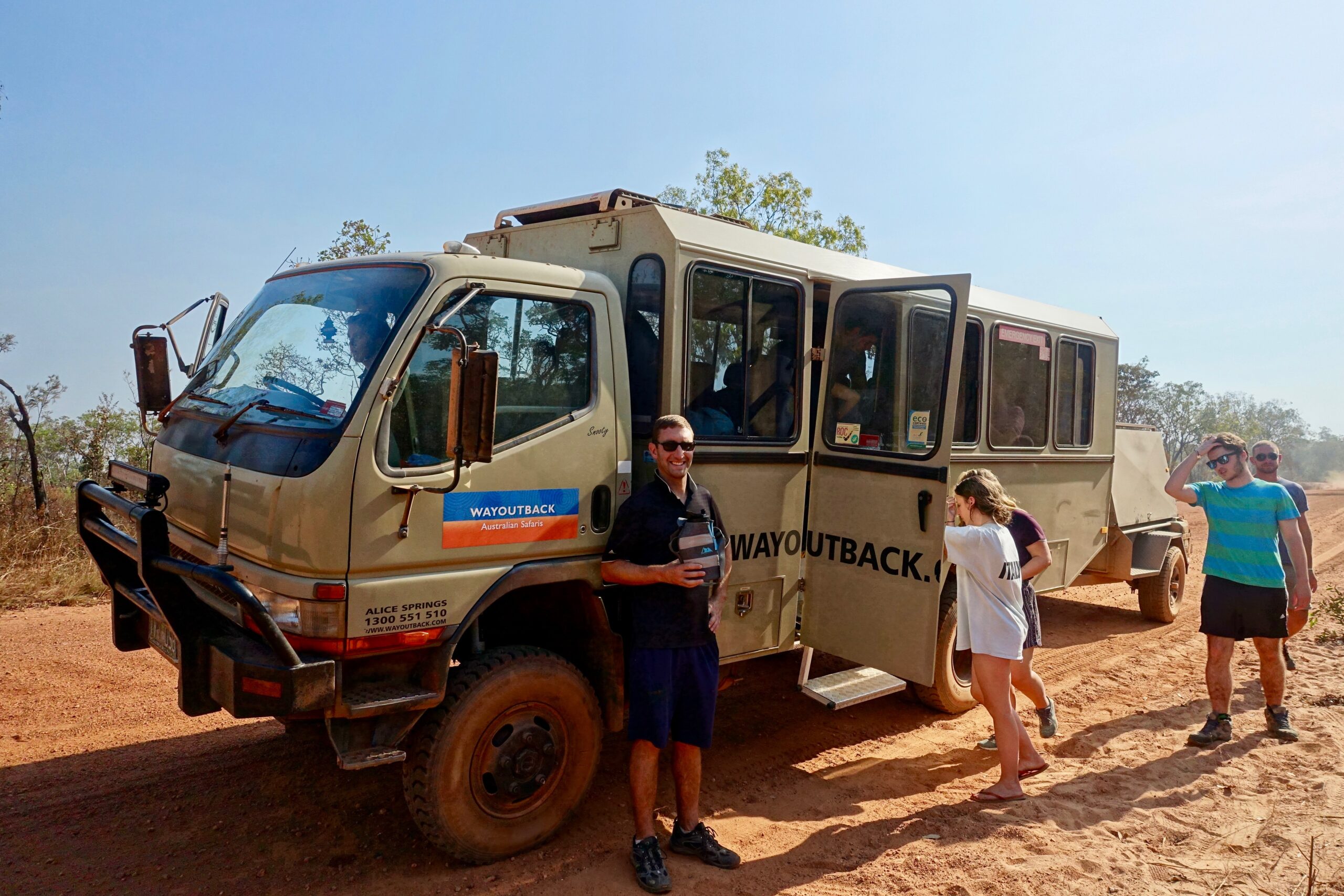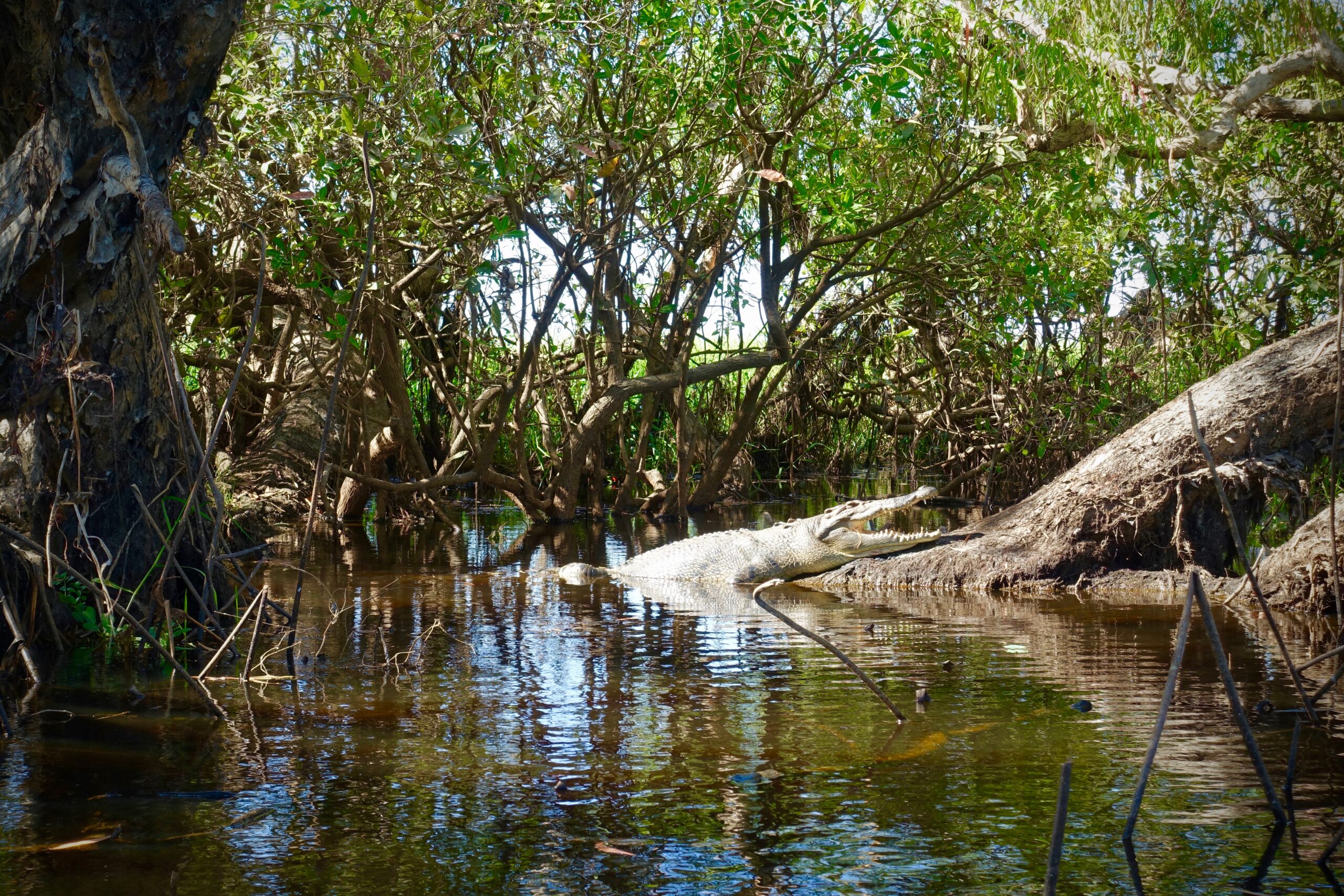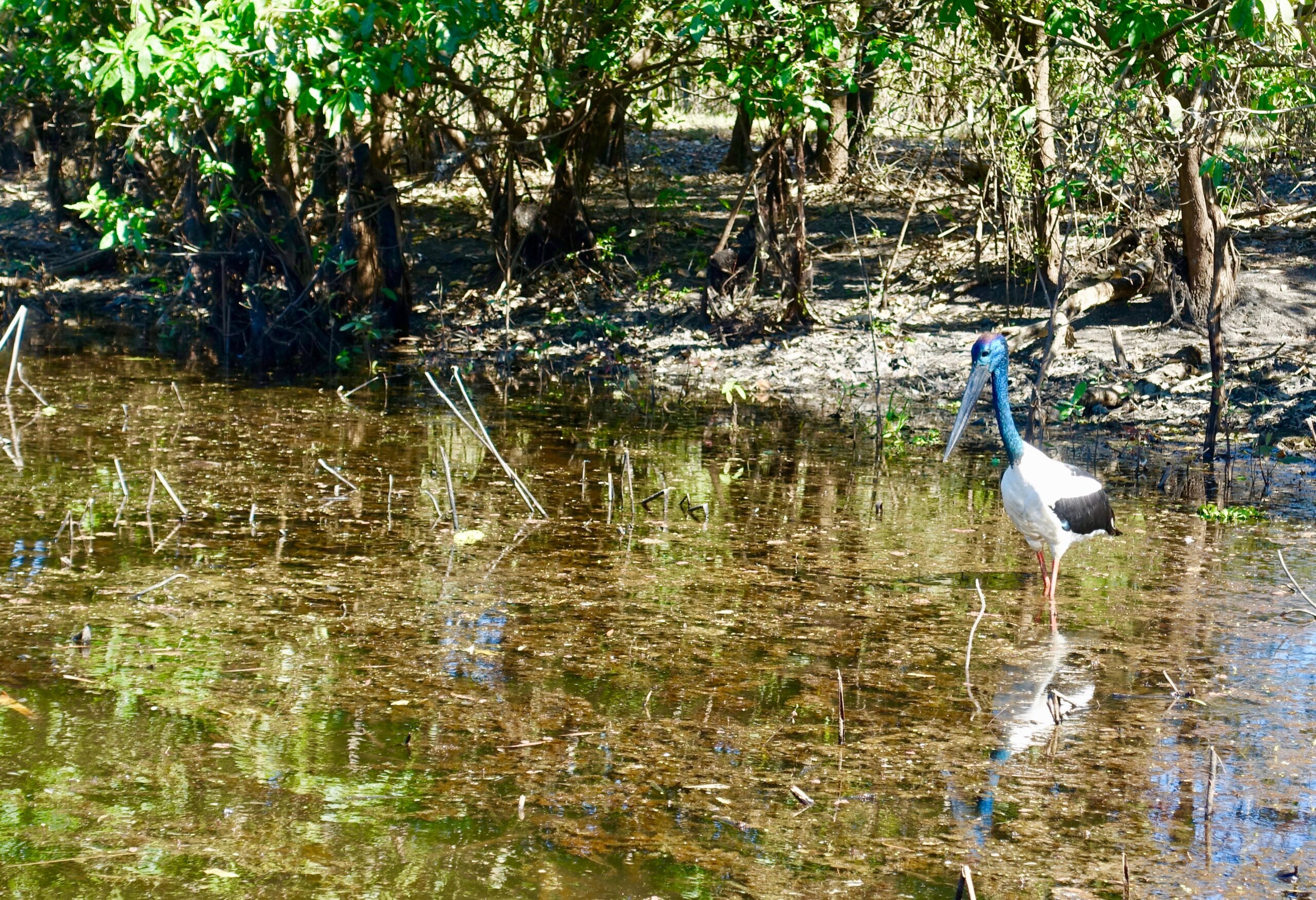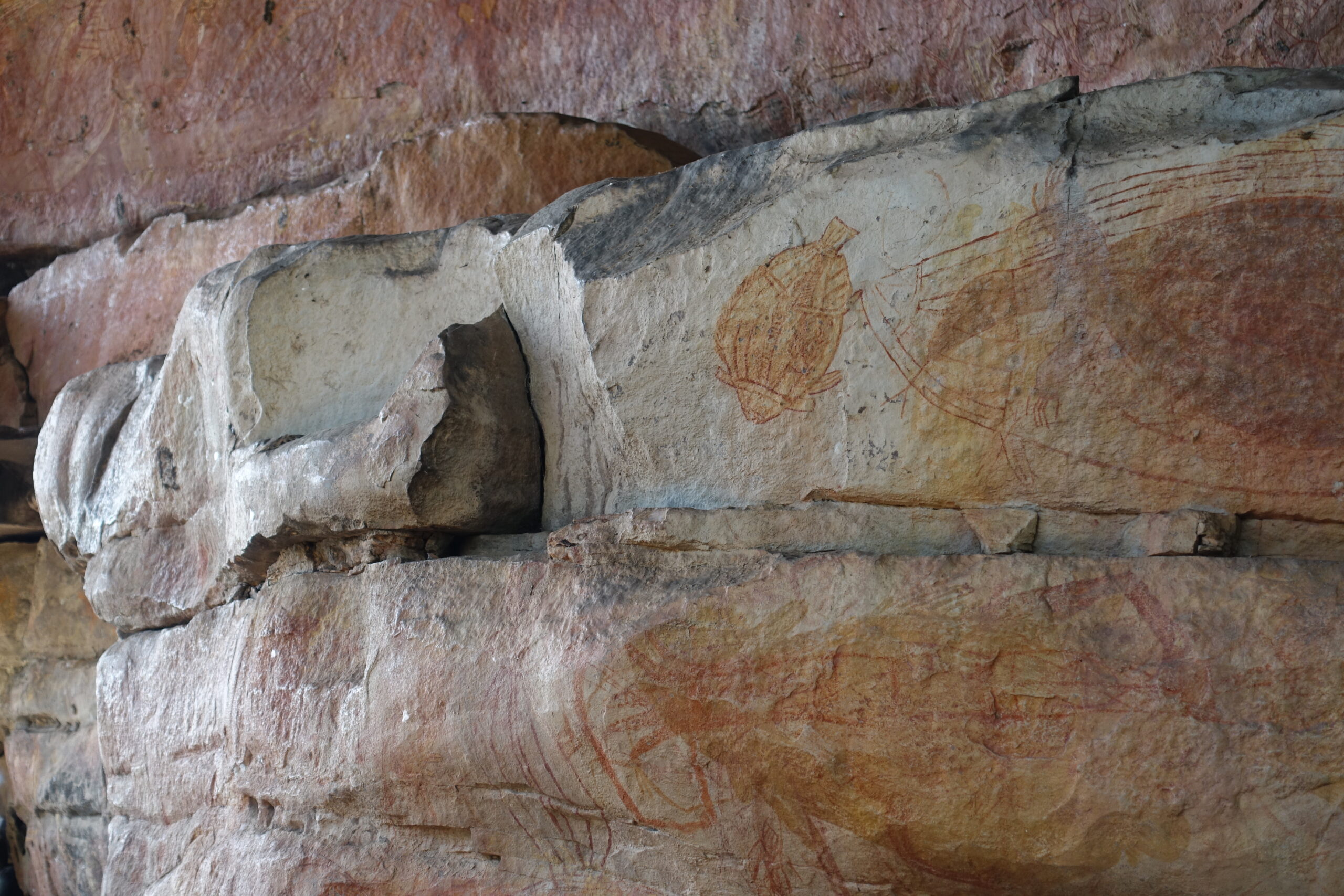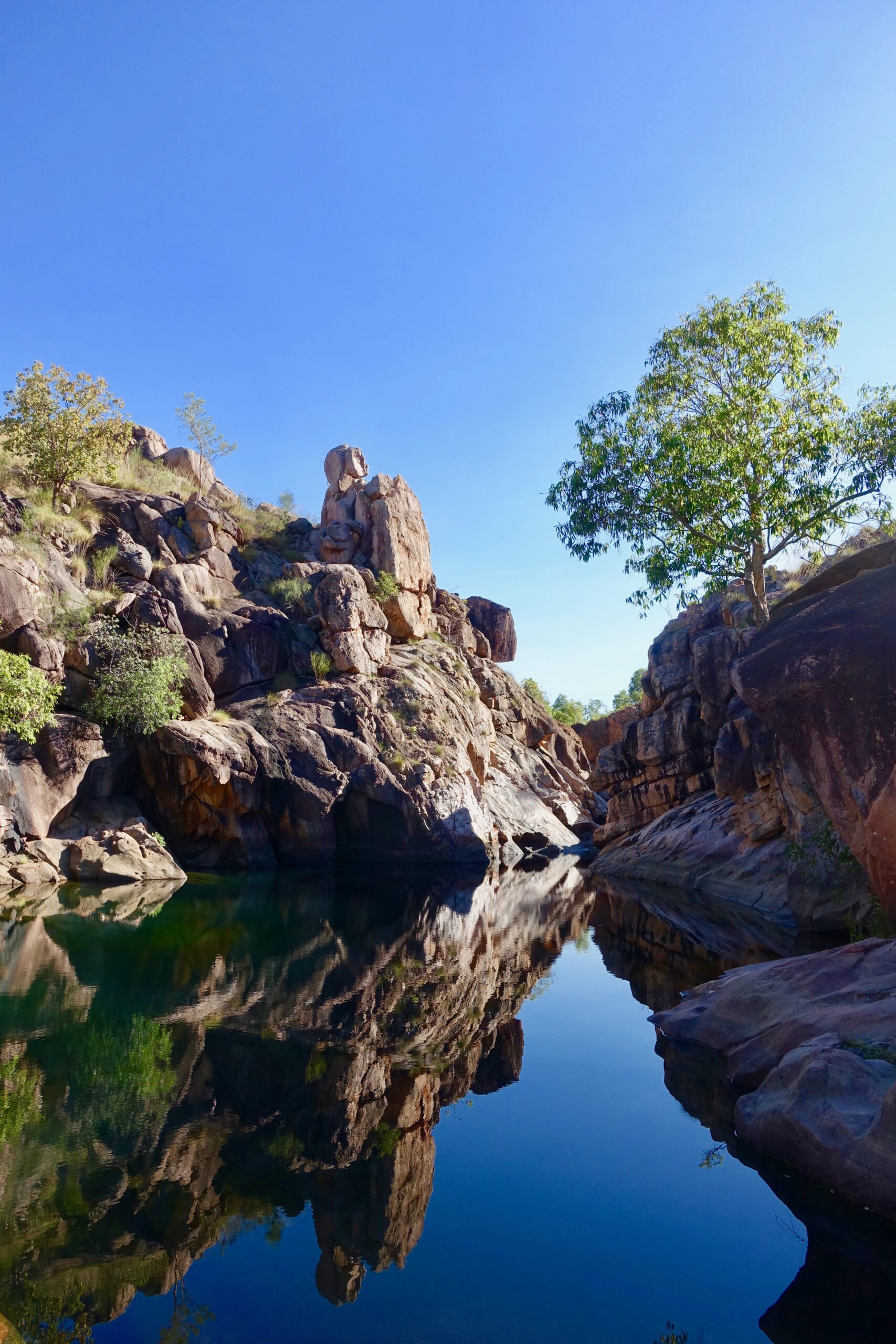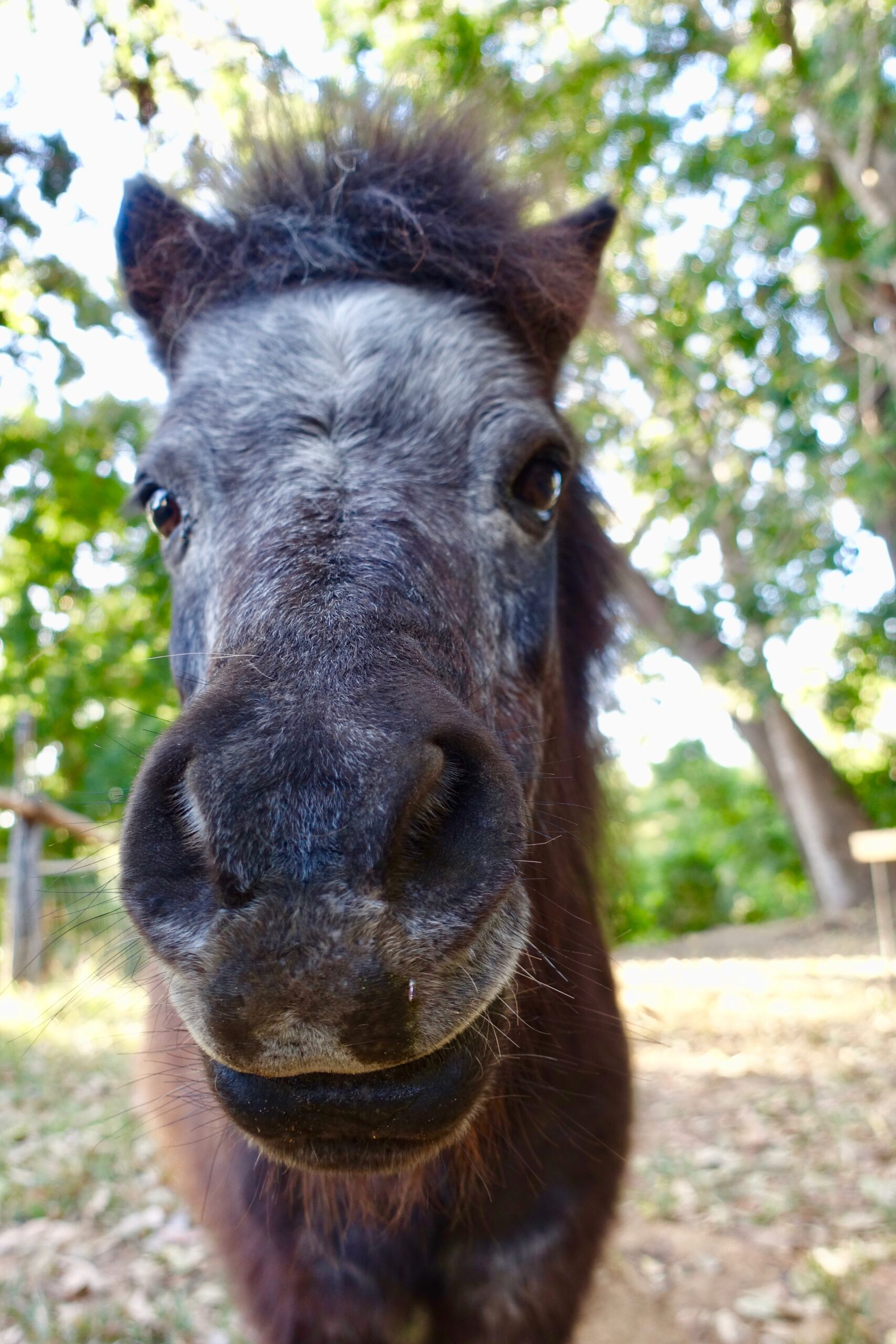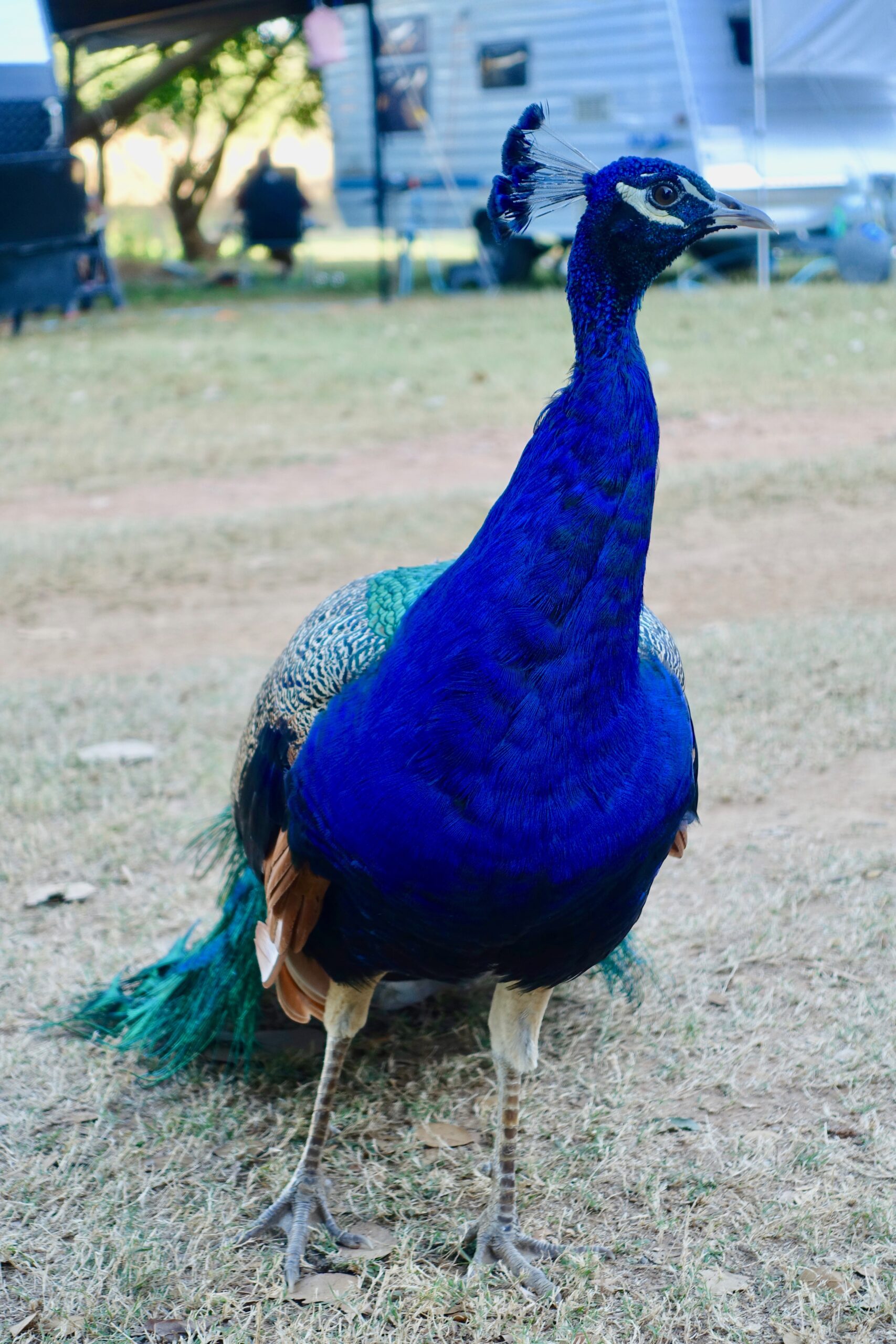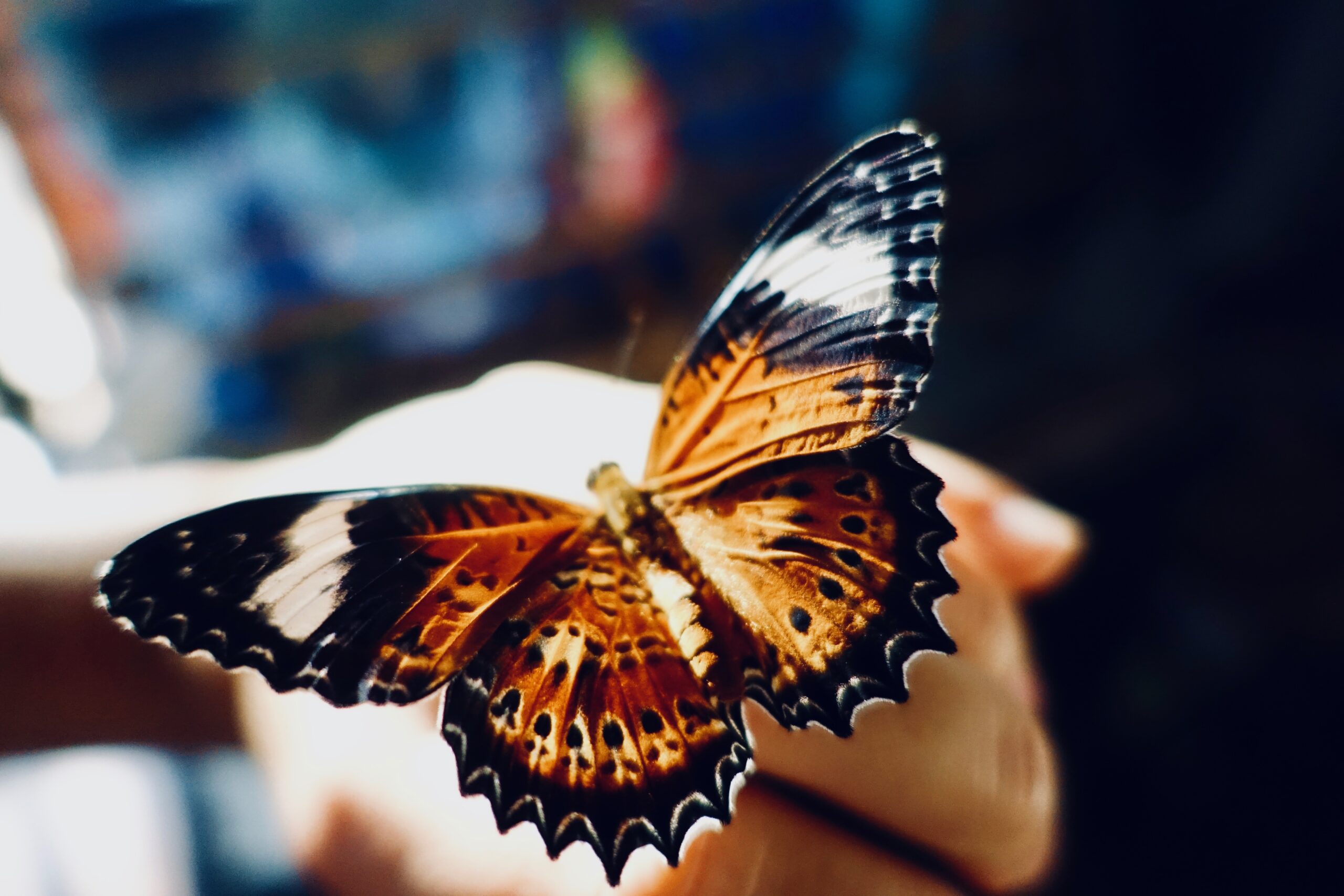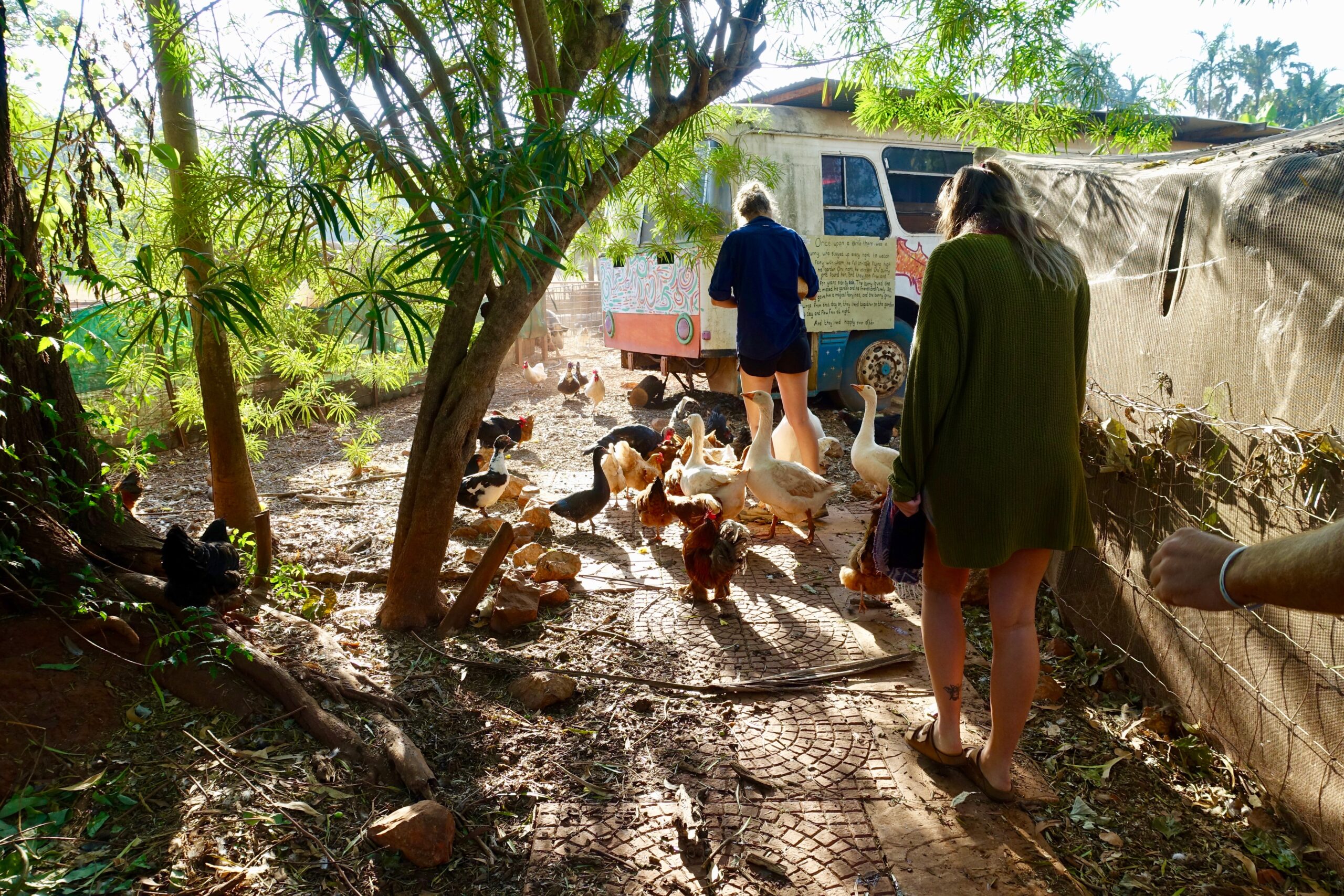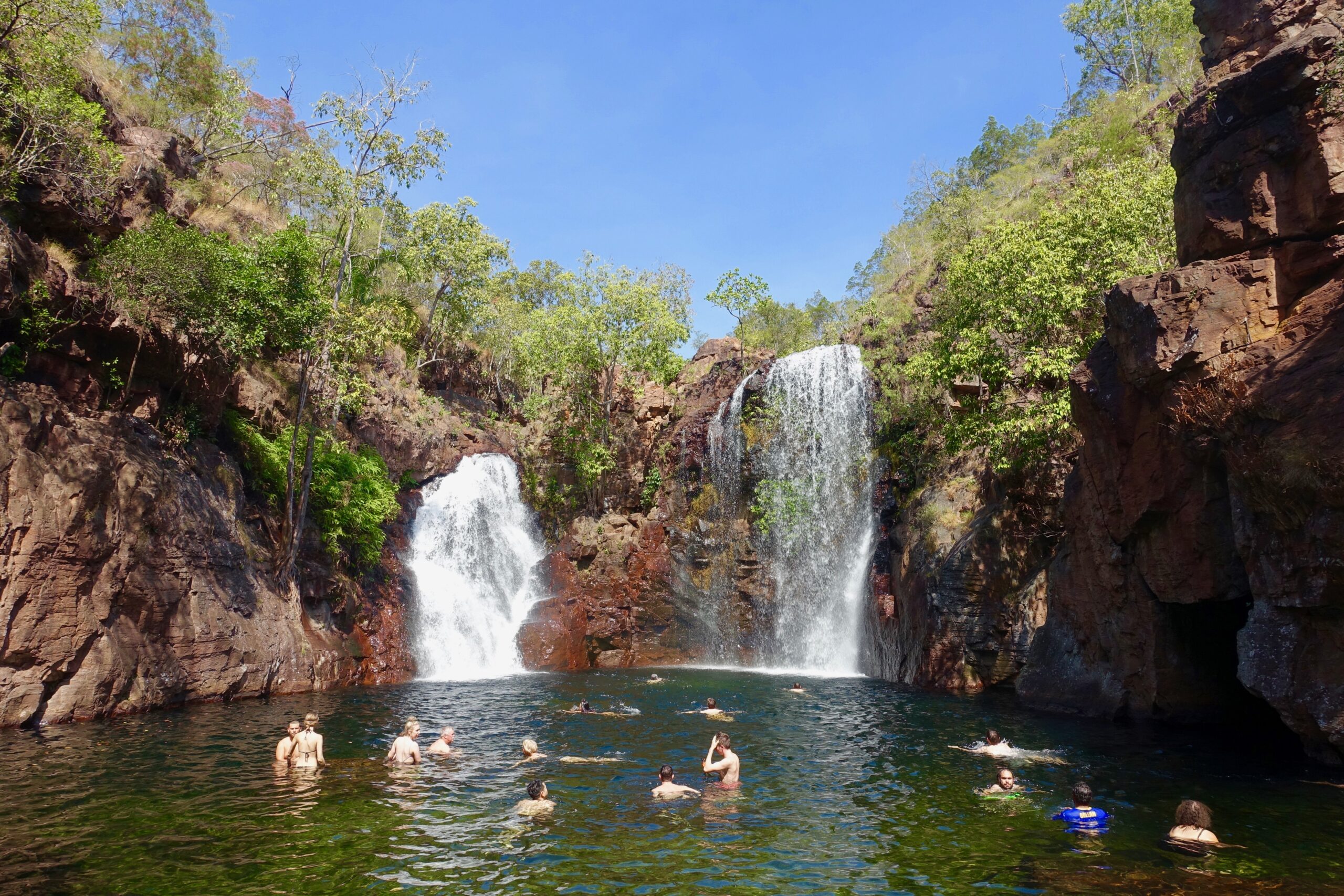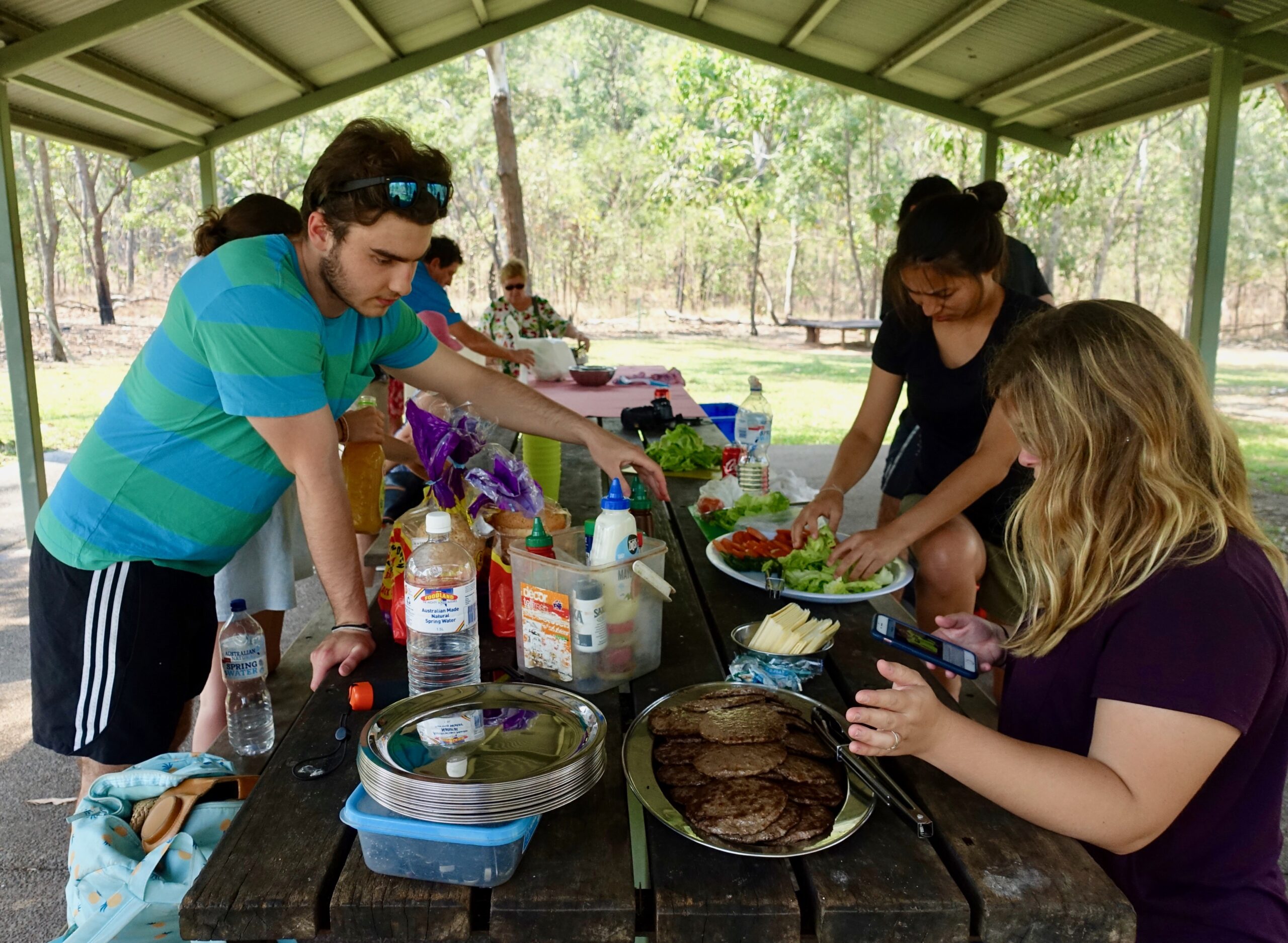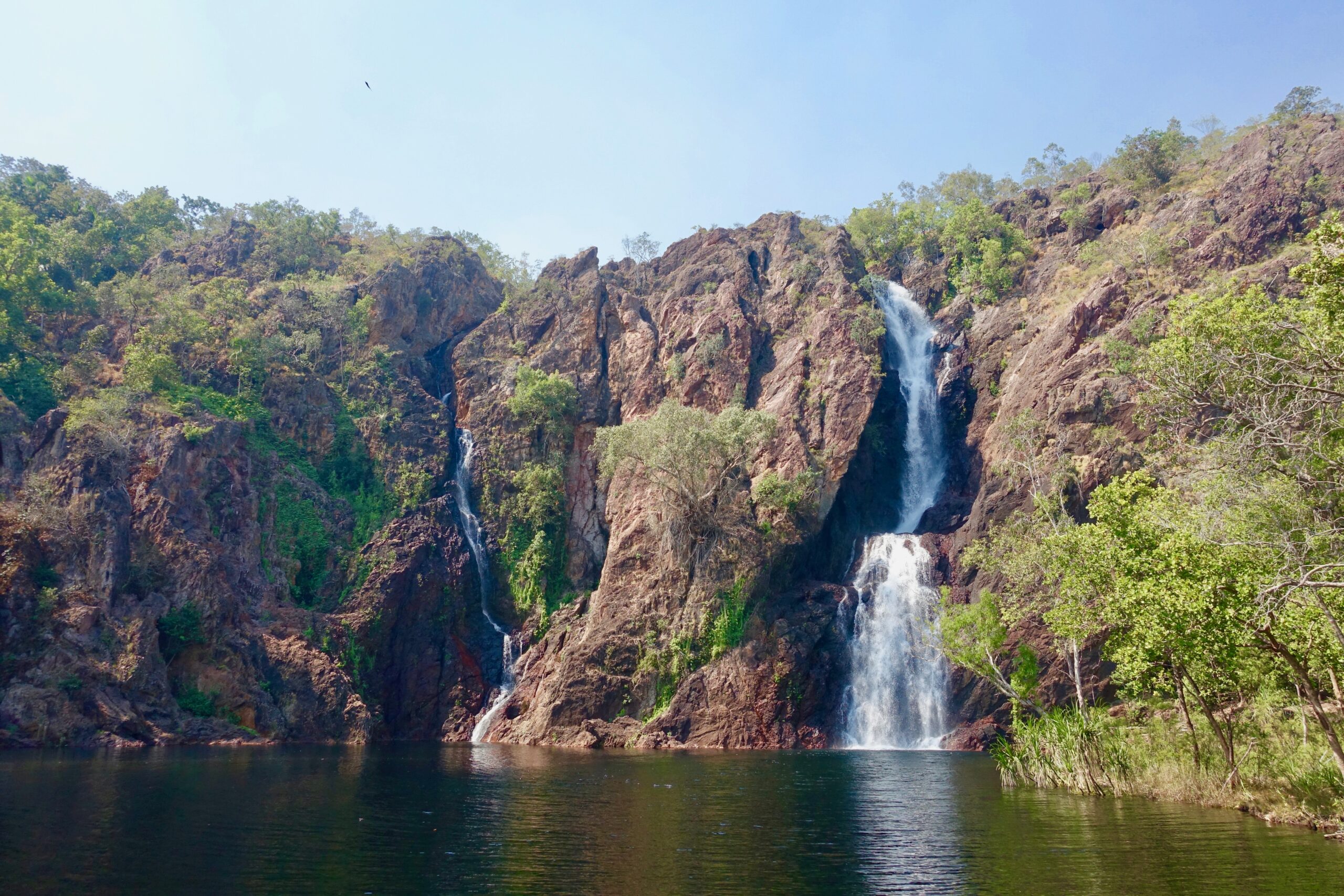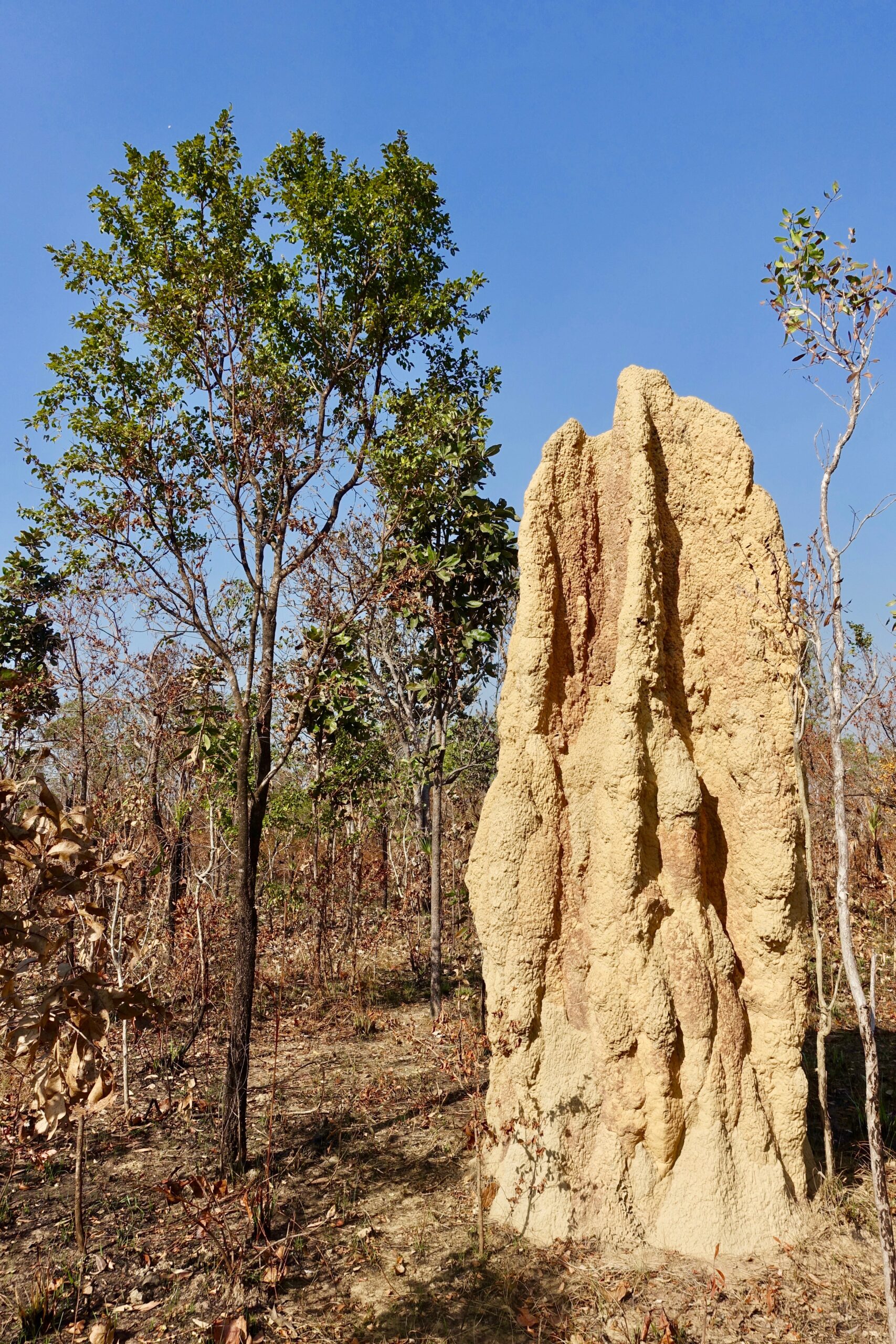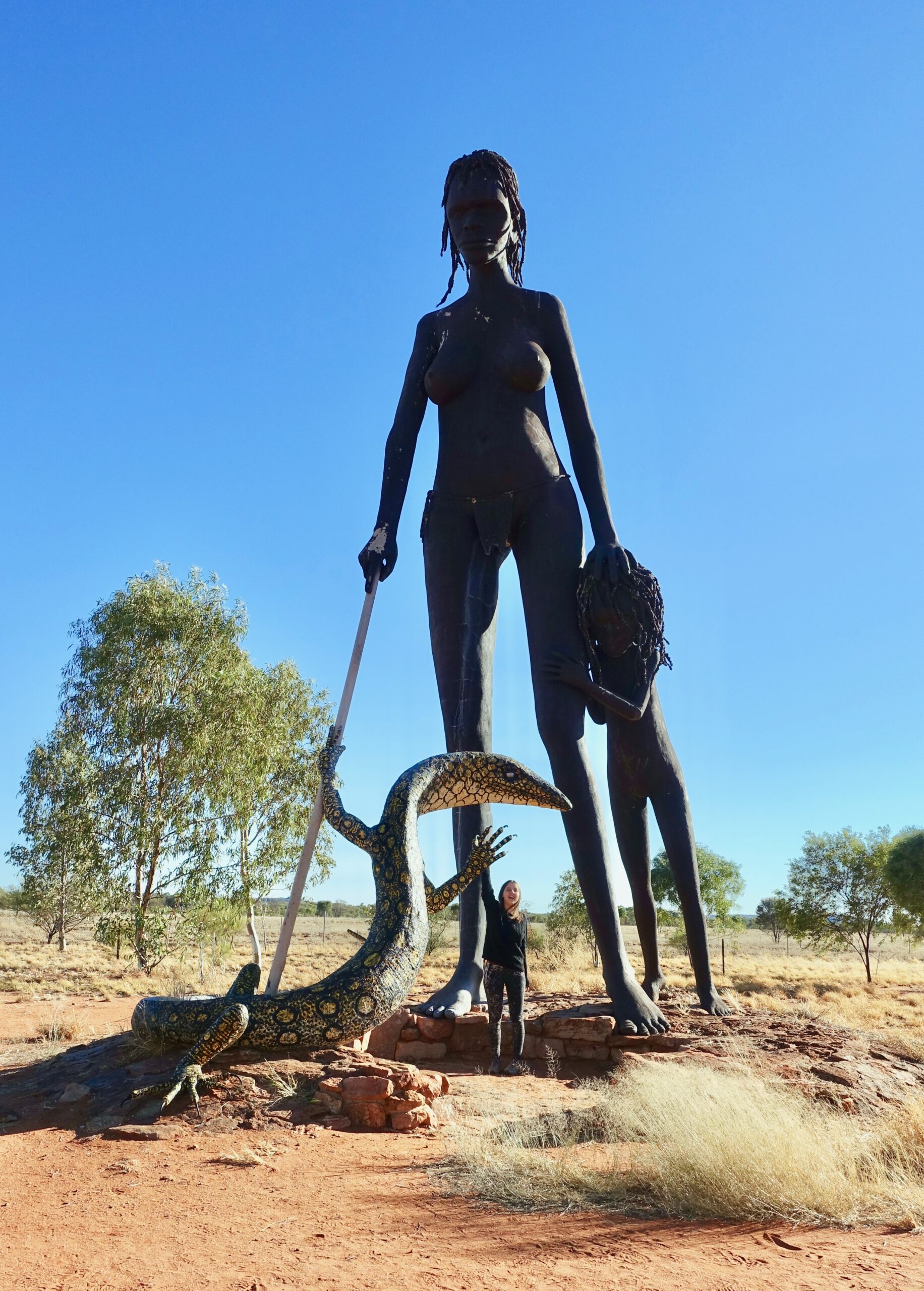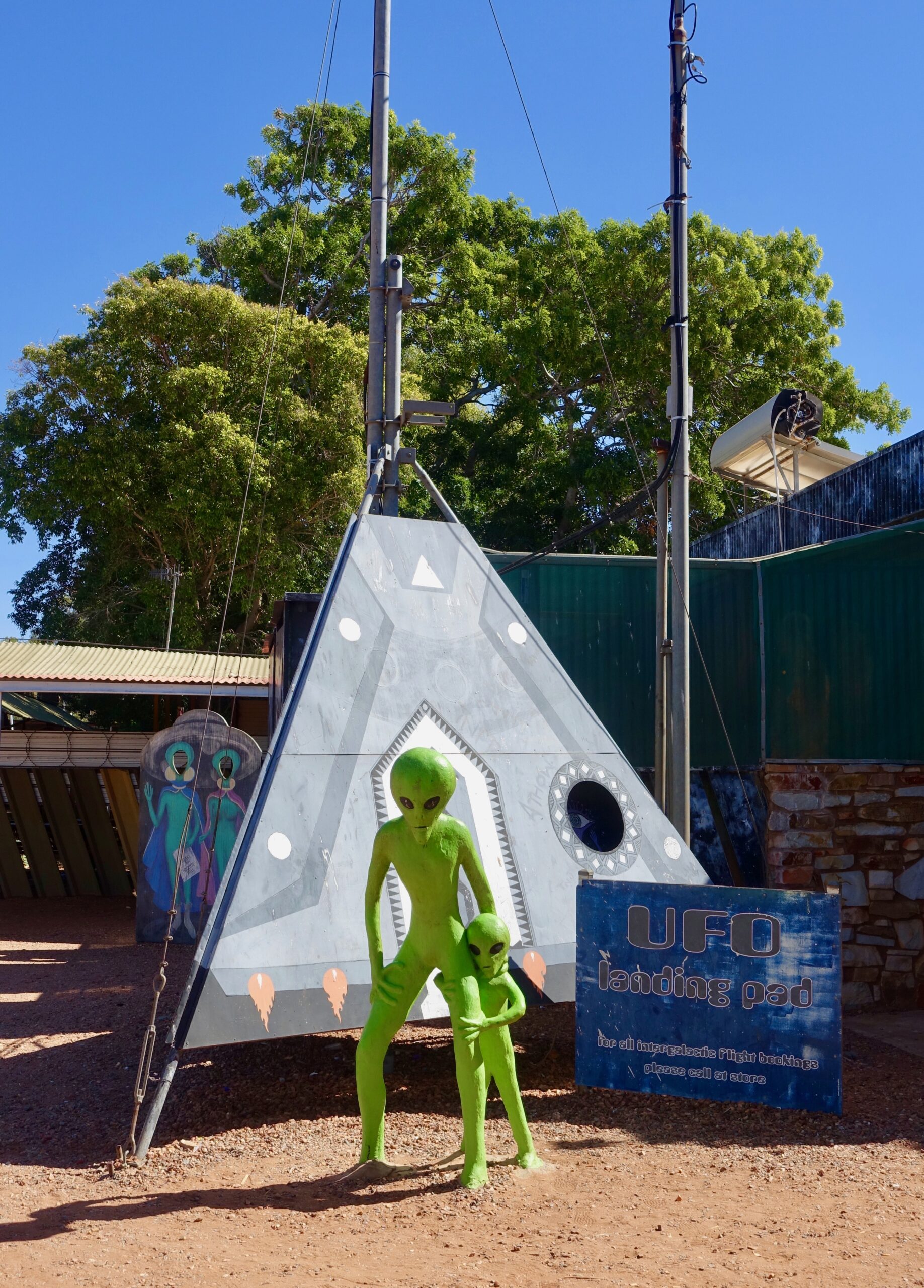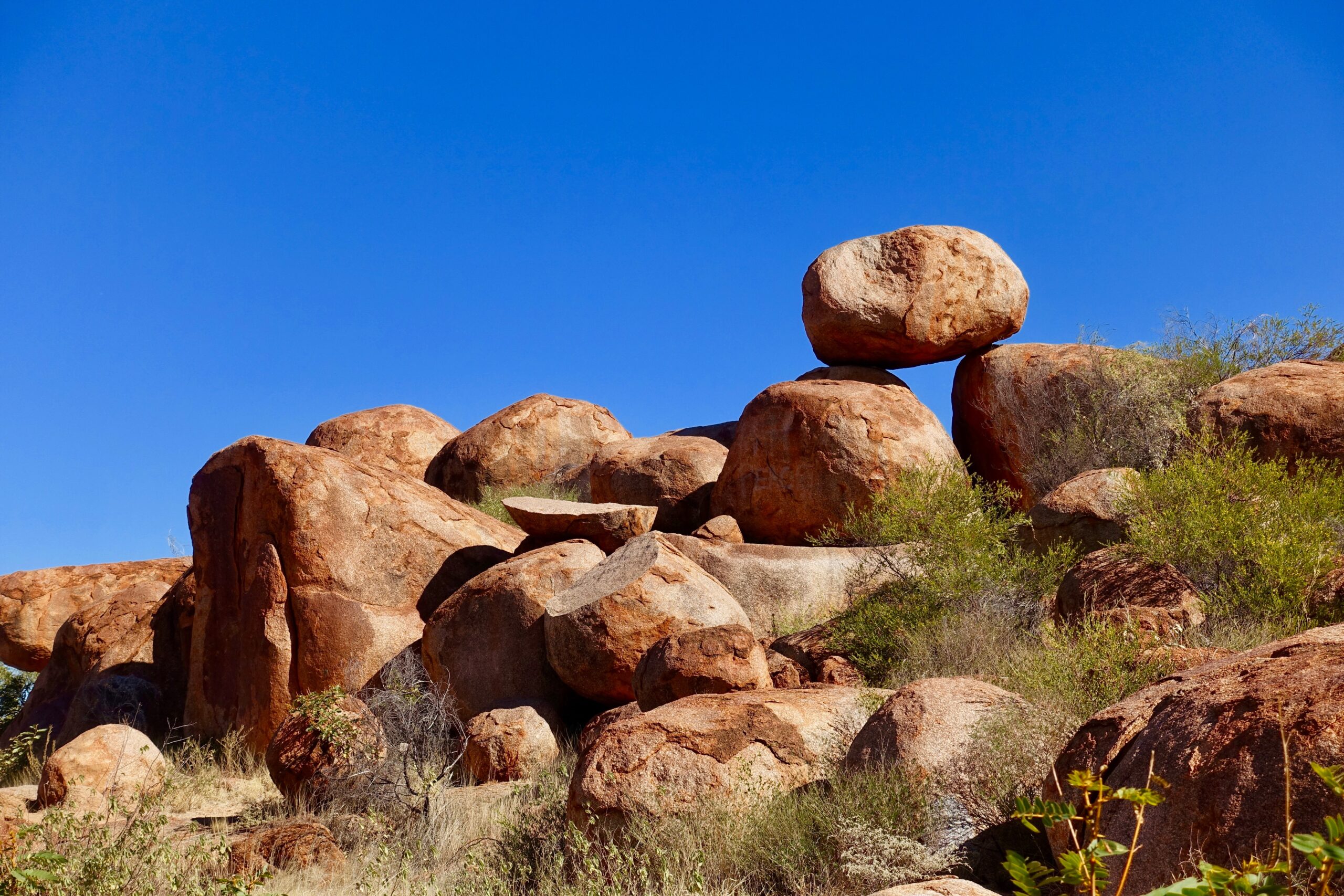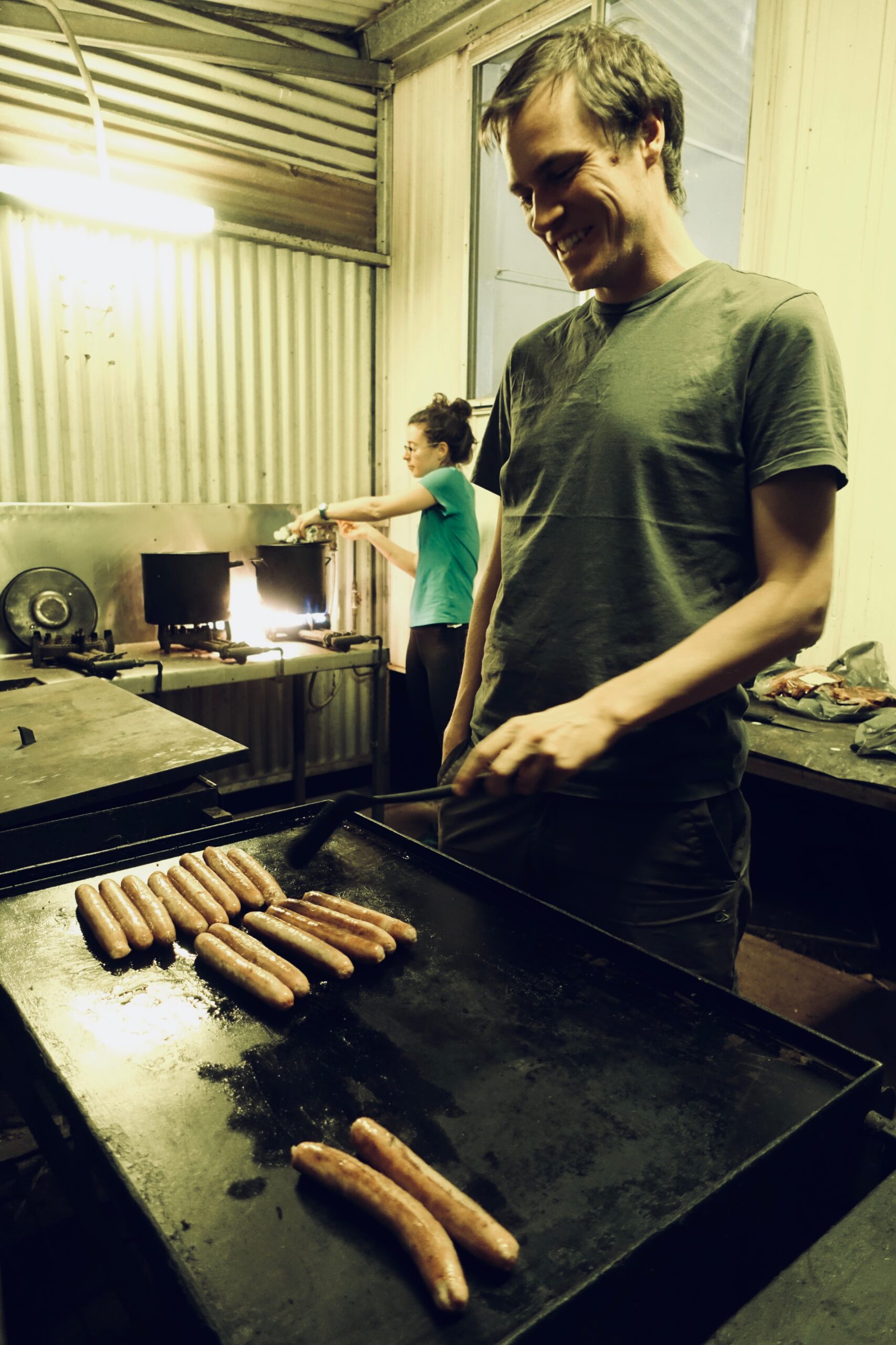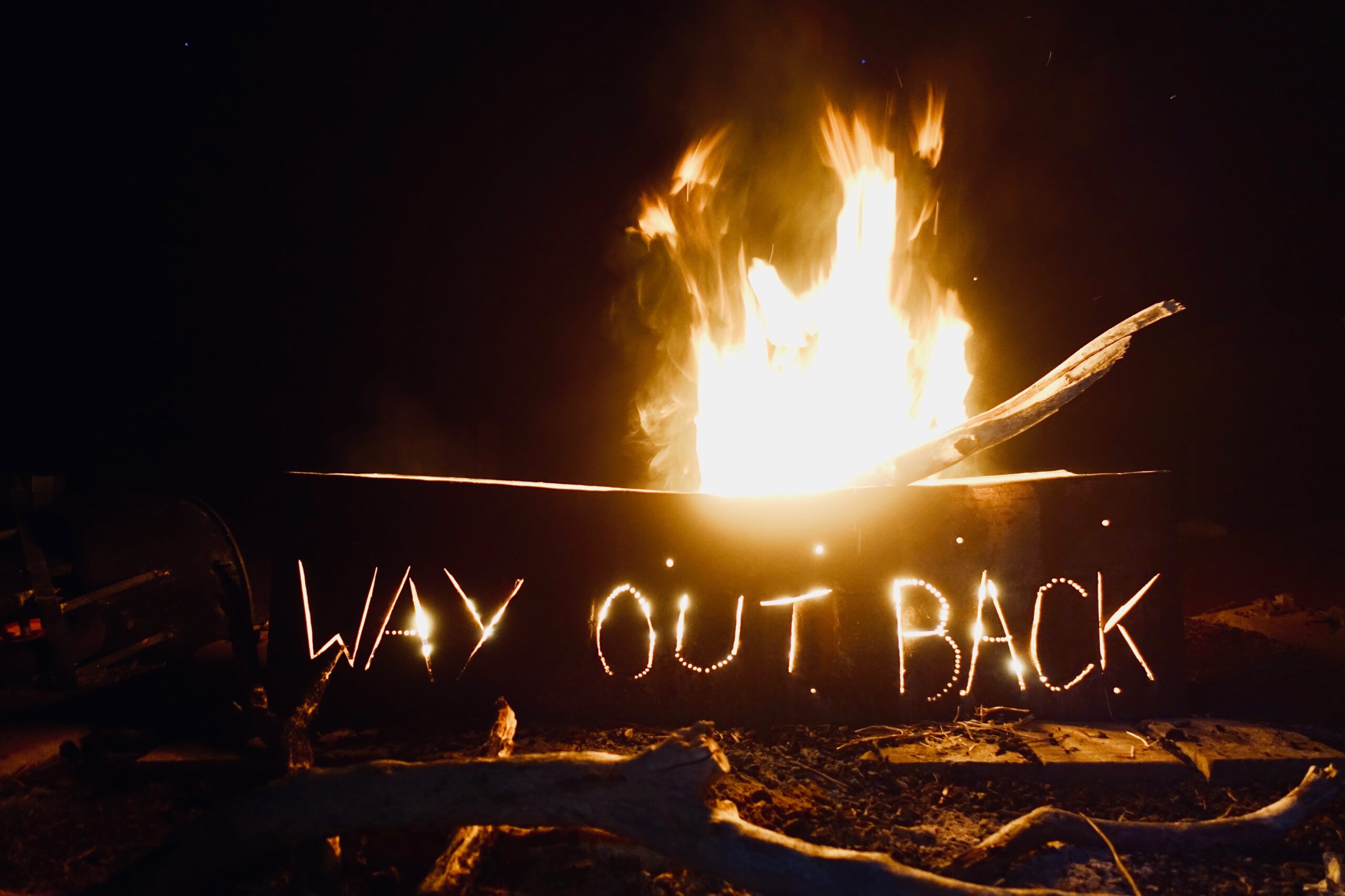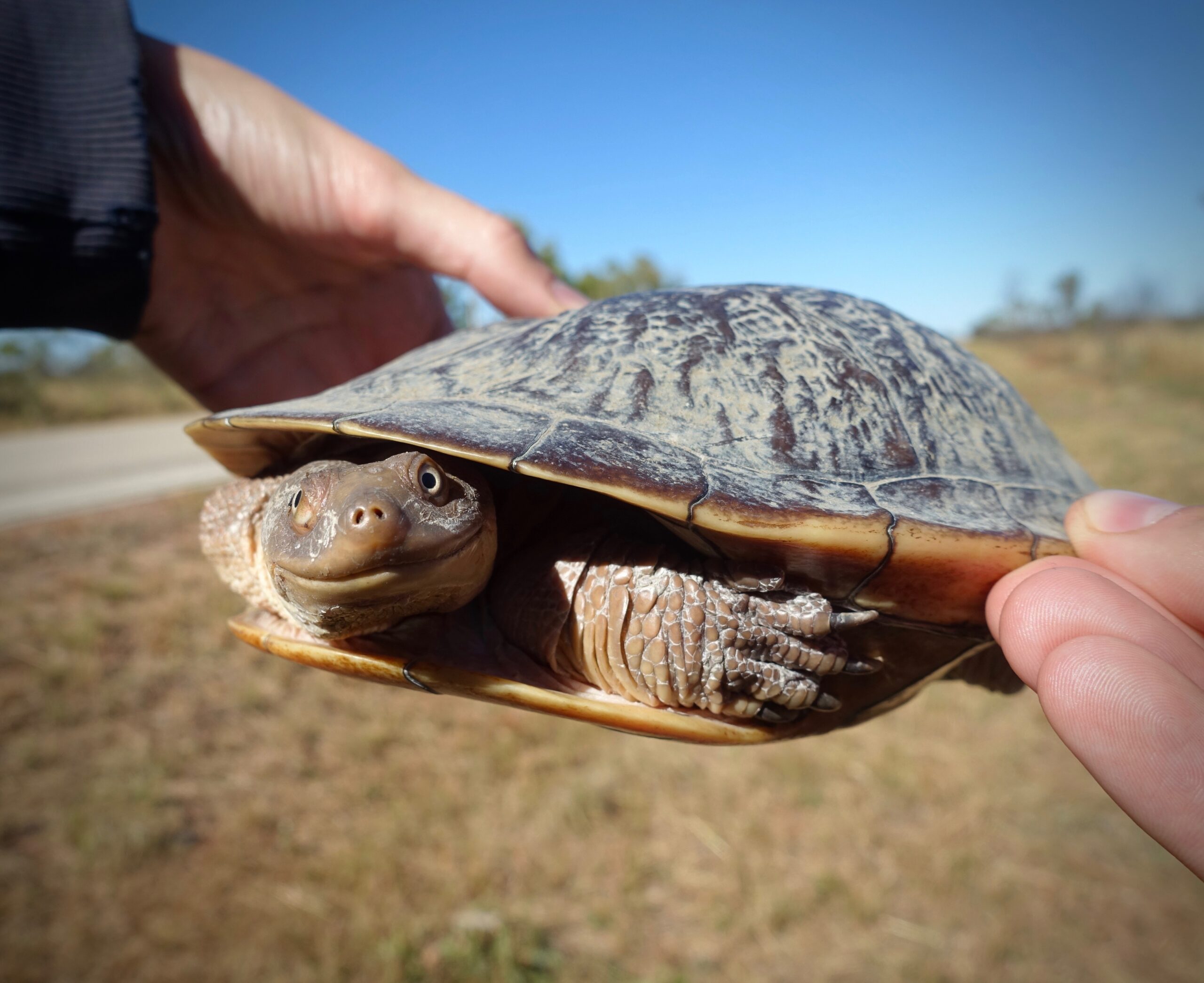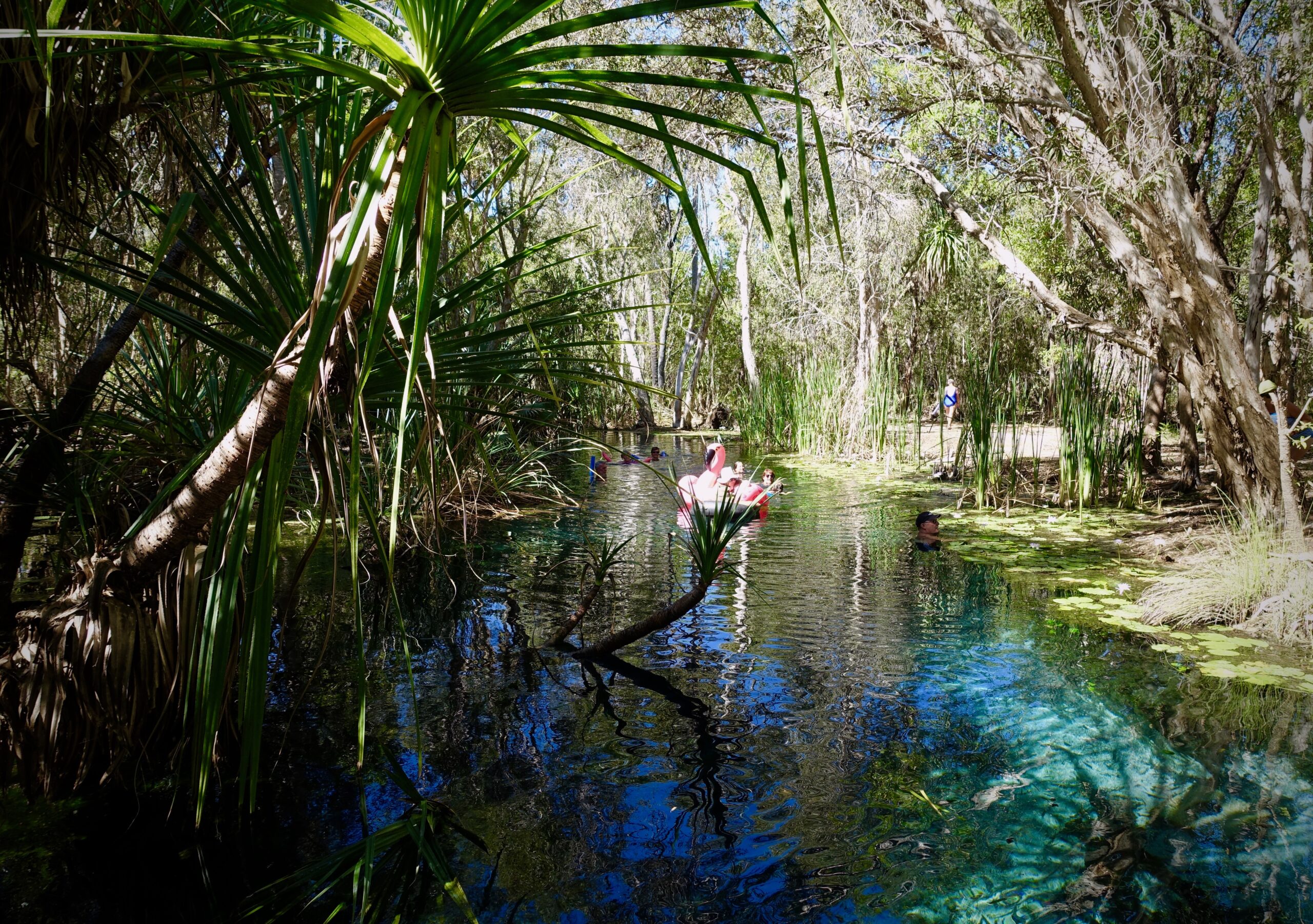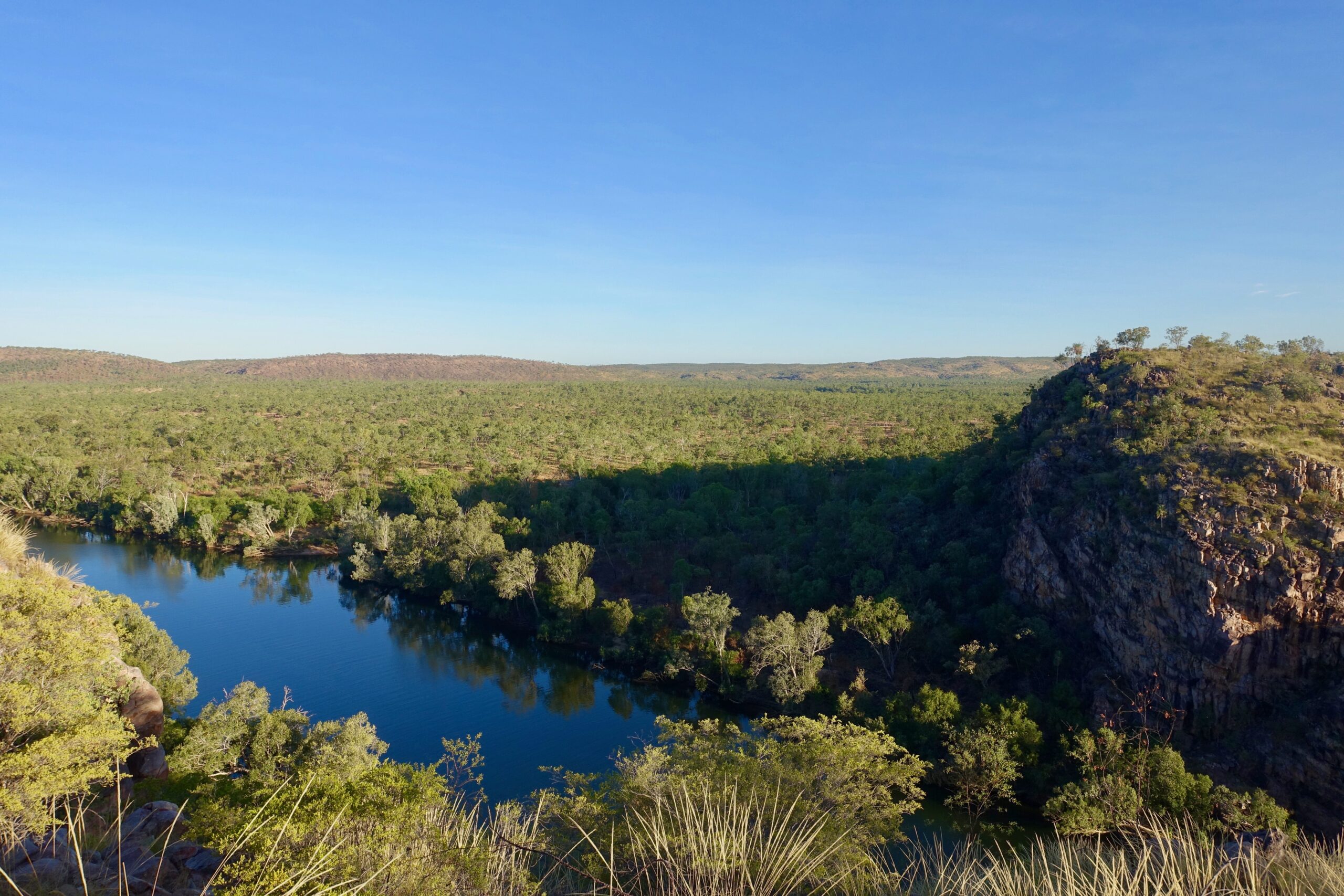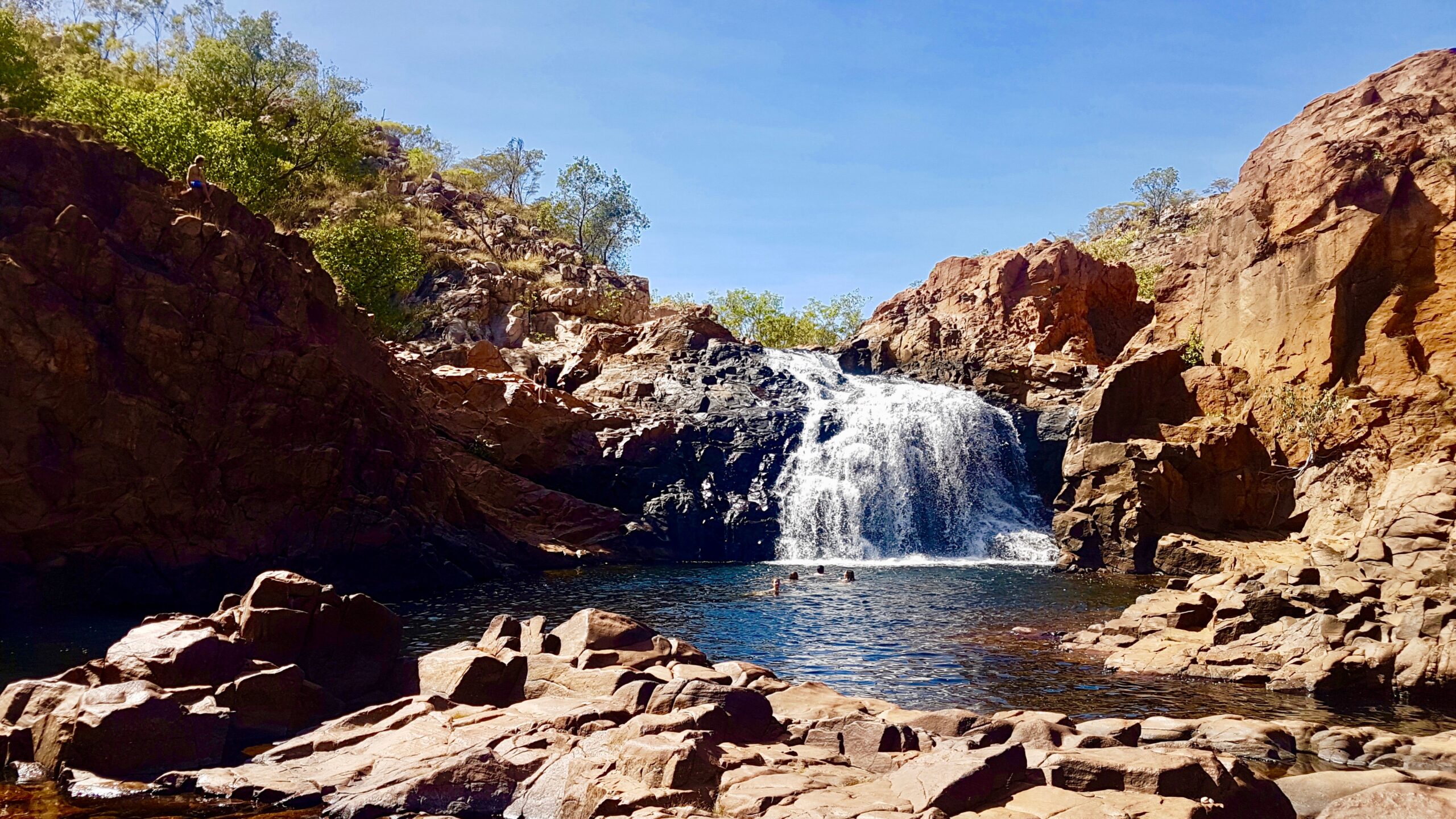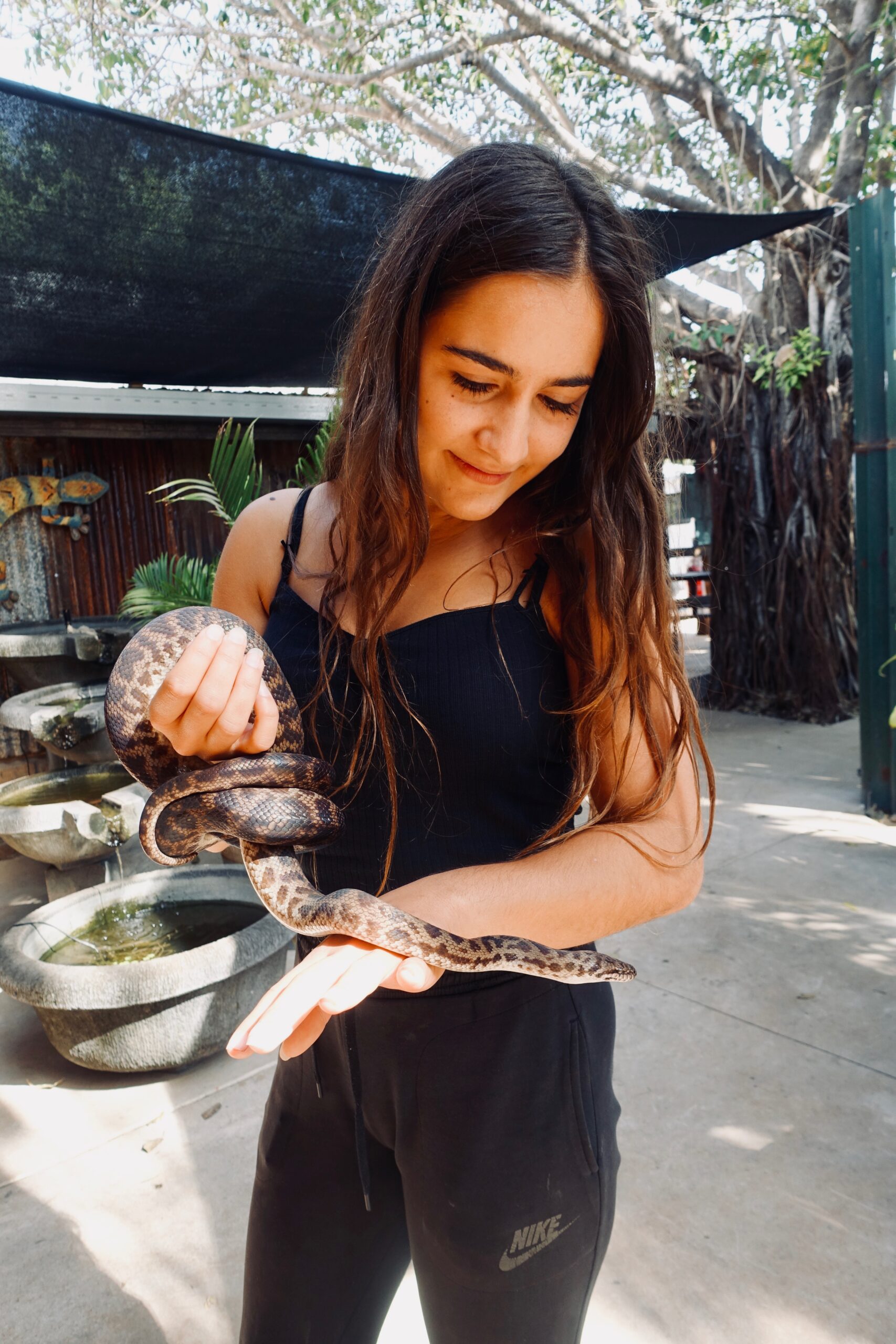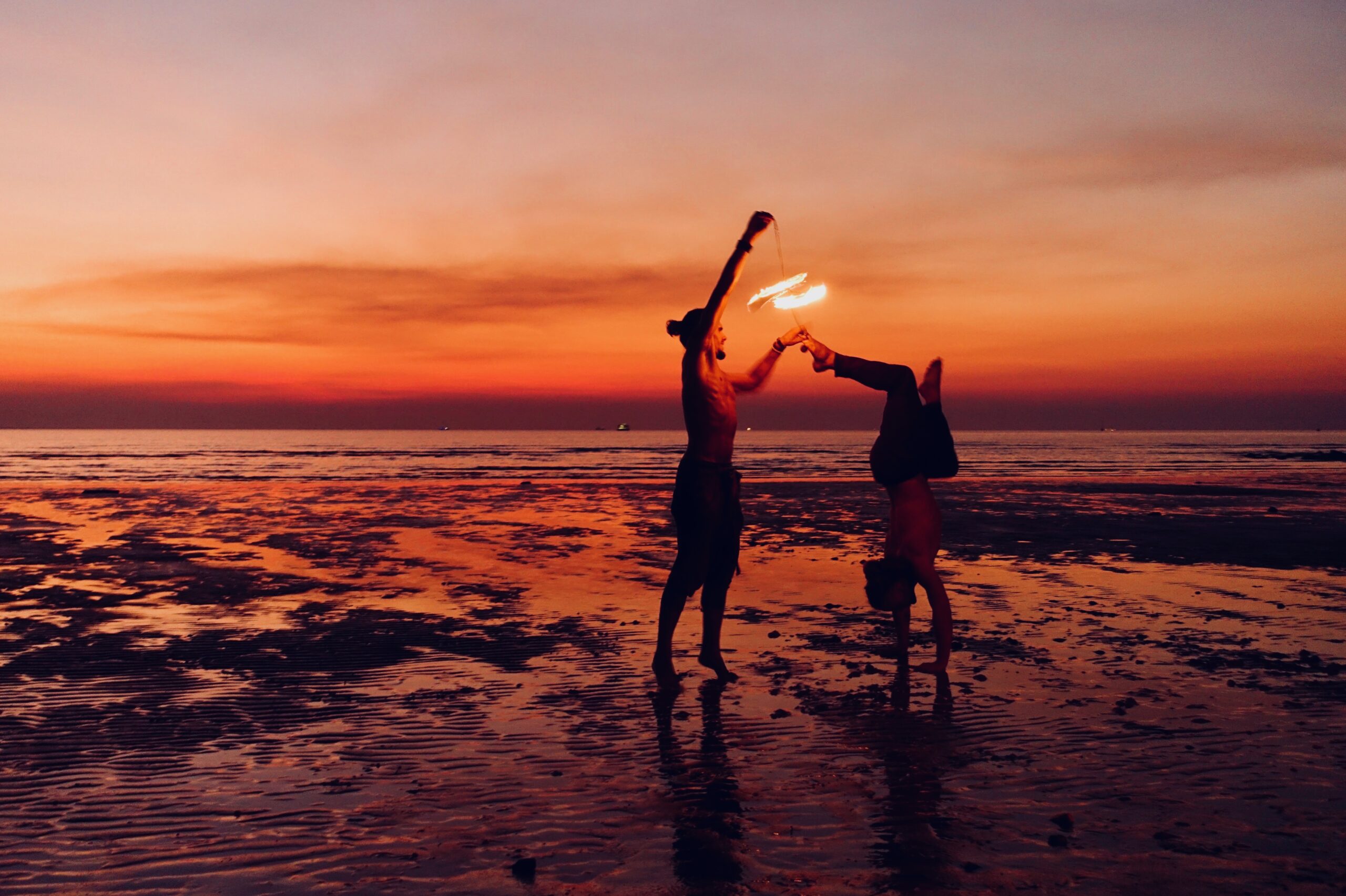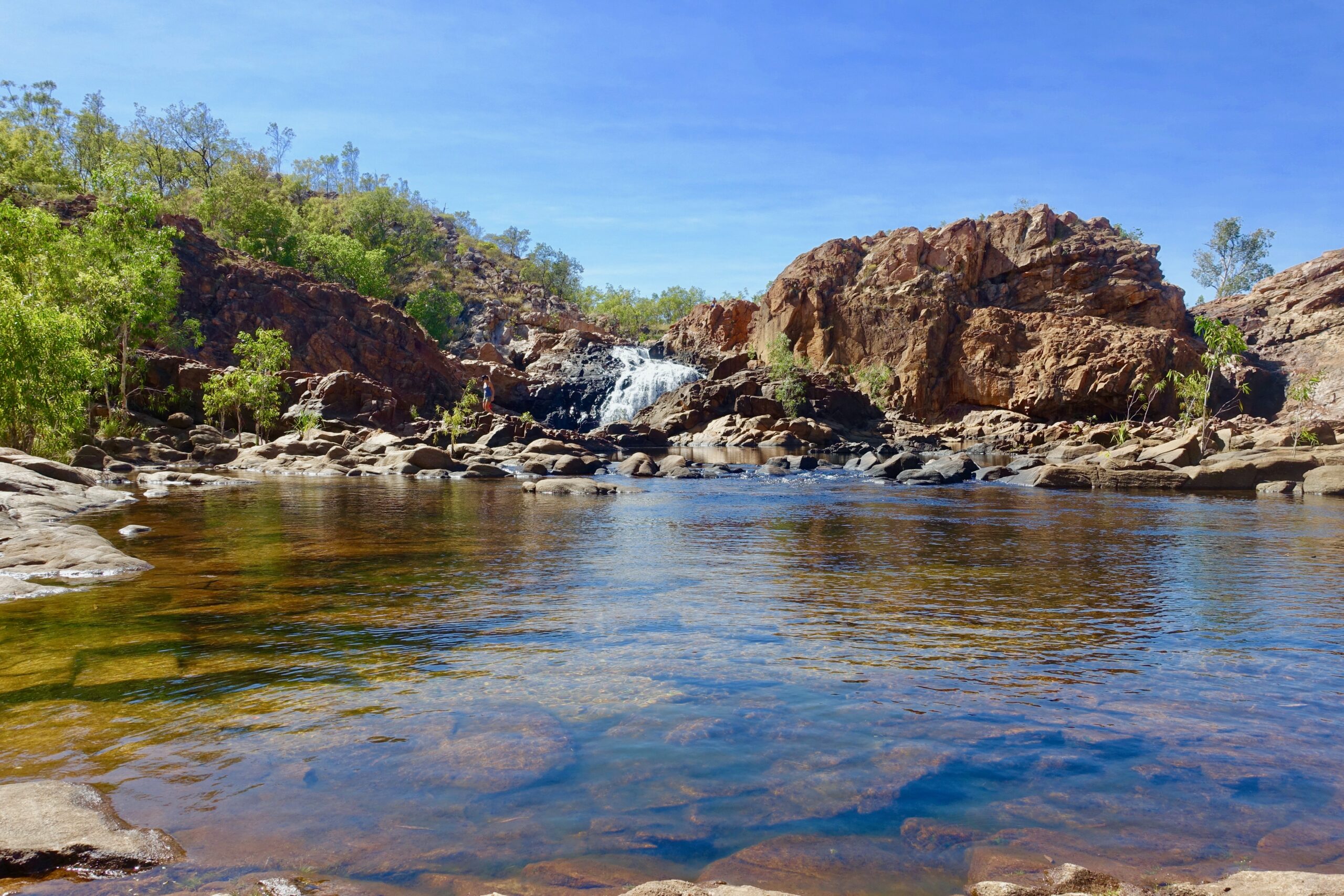Uluru, Kata Tjuta et Watarrka – Les trois merveilles de l'Outback Australien
Mon expérience avec la compagnie « The Rock Tour » dans le Territoire du Nord
3 jours et 2 nuits de Uluru à Alice Springs
«Palya » – Bienvenue sur les terres Anangu !
Je tenais absolument à découvrir la cambrousse Australienne appelée « Outback » avant de rentrer en France. Le Centre-Rouge m’a paru être une destination indispensable ! J’ai pu y découvrir la culture aborigène et la vie dans ce désert semi-aride. J’ai donc passé trois jours et deux nuits à dormir dans les fameux « swag » Australiens avec la compagnie très expérimentée « The Rock Tour ».
Jour 1 – Uluru
Ce qui est bien avec ce voyage organisé, c’est qu’il est également possible de prendre l’avion le matin même et d’arriver directement à l’aéroport d’Ayers Rock/Connellan avant 13h00 pour commencer le tour sans perdre de temps.
Le matin, j’ai donc pris un vol depuis Melbourne à destination d’Ayers Rock. Depuis mon hublot, situé sur la droite, j’ai pu admirer les reliefs des dômes de Kata Tjuta. Les passagers étant assis à côté des hublots de gauche ont pu voir Uluru. Leur taille est impressionnante. Tous deux paraissent imposants et trônent fièrement sur le sol rouge-orangé qui parait aplani depuis l’avion.
On m’a accueilli dans le petit aéroport d’Ayers Rock (AYQ) avec le sourire vers midi. Le bus était déjà un peu rempli puisque certains ont rejoint le tour plus tôt, au lever du soleil, à Alice Springs.
Une fois le bus complet avec ses 21 passagers, nous avons pris la route et mangé un bon sandwich (il y a des options végétariennes) sur le trajet pour le déjeuner.
En s’approchant peu à peu du rocher, on sent l’excitation monter dans le bus et on prend conscience qu’Uluru est au moins deux fois plus grand que ce que l’on s’était imaginé !
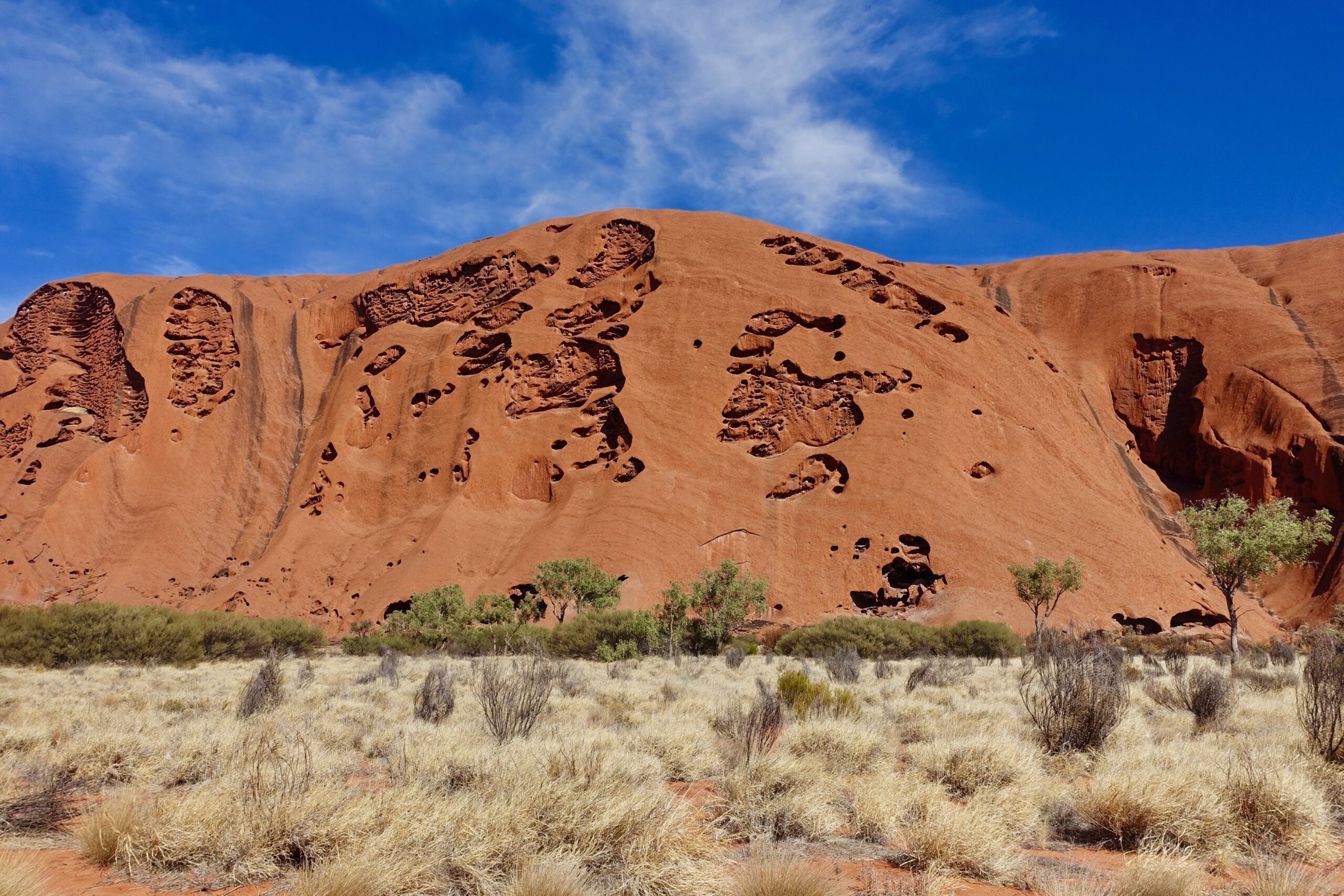
Il faut en moyenne un peu plus de trois heures pour faire le tour d’Uluru (environ 10km). La marche est assez facile puisque le parcours est plat.
En début d’après-midi, on débute notre tour tranquillement, à distance du rocher, depuis la face d’Uluru qui est tenue un peu plus « secrète ». Par moment, des panneaux nous indiquent qu’il est interdit de prendre de photographies sur certaines portions du rocher par respect pour les aborigènes qui considèrent le lieu hautement sacré.
A mi-chemin, nous nous asseyons tous en cercle à l’ombre et notre guide Andrew, prend le temps de nous en dire un peu plus sur ce que représente Uluru et la région pour les aborigènes.
Le « Centre Rouge » (Red Center) est une zone subdésertique puisqu’il est entouré de multiples petites chaines de montagnes, ce qui lui procure de l’humidité donc moins d’évaporation d’eau. Ils estiment qu’il tombe en moyenne moins de 300mm de pluie par an. Parmi les différents peuples aborigène, Uluru a plus de connexion spirituelle avec les Pitjantjatjara. Les aborigènes de la région se donnent actuellement le nom d’Anangu (« être humain »), dû aux brassages de langues aborigènes.
Les aborigènes étaient des petites populations semi-nomadiques (le dernier semi-nomade est décédé en 1984). Ils se devaient de se déplacer afin de trouver des sources d’eau et de nourriture (pour chasser les animaux).
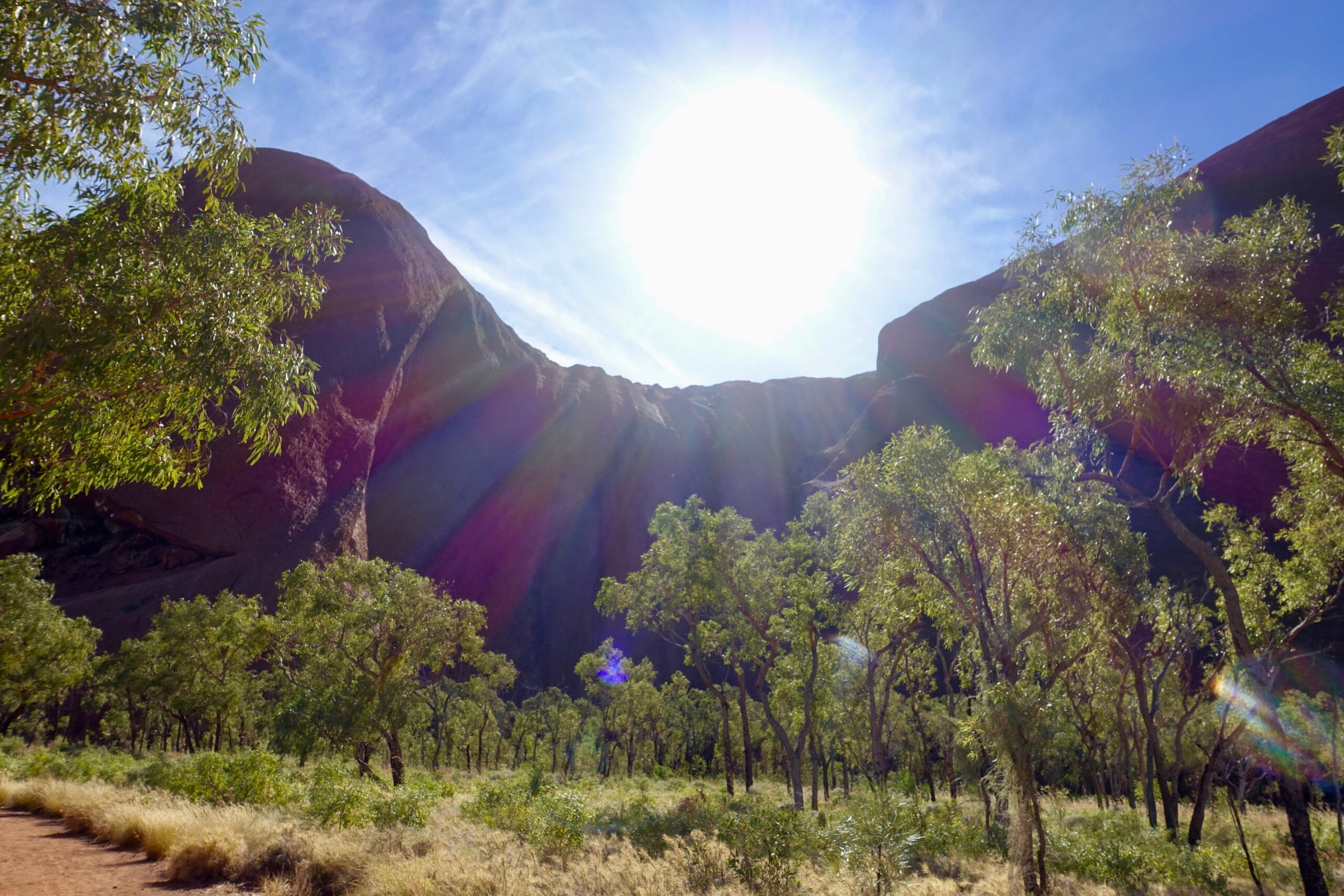
La deuxième partie de la marche s’effectue plus proche du monolithe, on a alors pu mieux discerner la couleur, et toucher le grès. On a également pu admirer ce qu’il reste des fresques peintes, et aller visiter le trou d’eau le plus conséquent. Uluru est fait d’une roche non poreuse, ce qui explique les trous d’eau qu’il contient et également, en partie, pourquoi il est tant important aux yeux des aborigènes. L’eau étant essentielle pour la vie, les initiations se faisaient donc à Uluru car il y avait plus d’eau pour toutes les personnes se rendant au monolithe lors des célébrations.
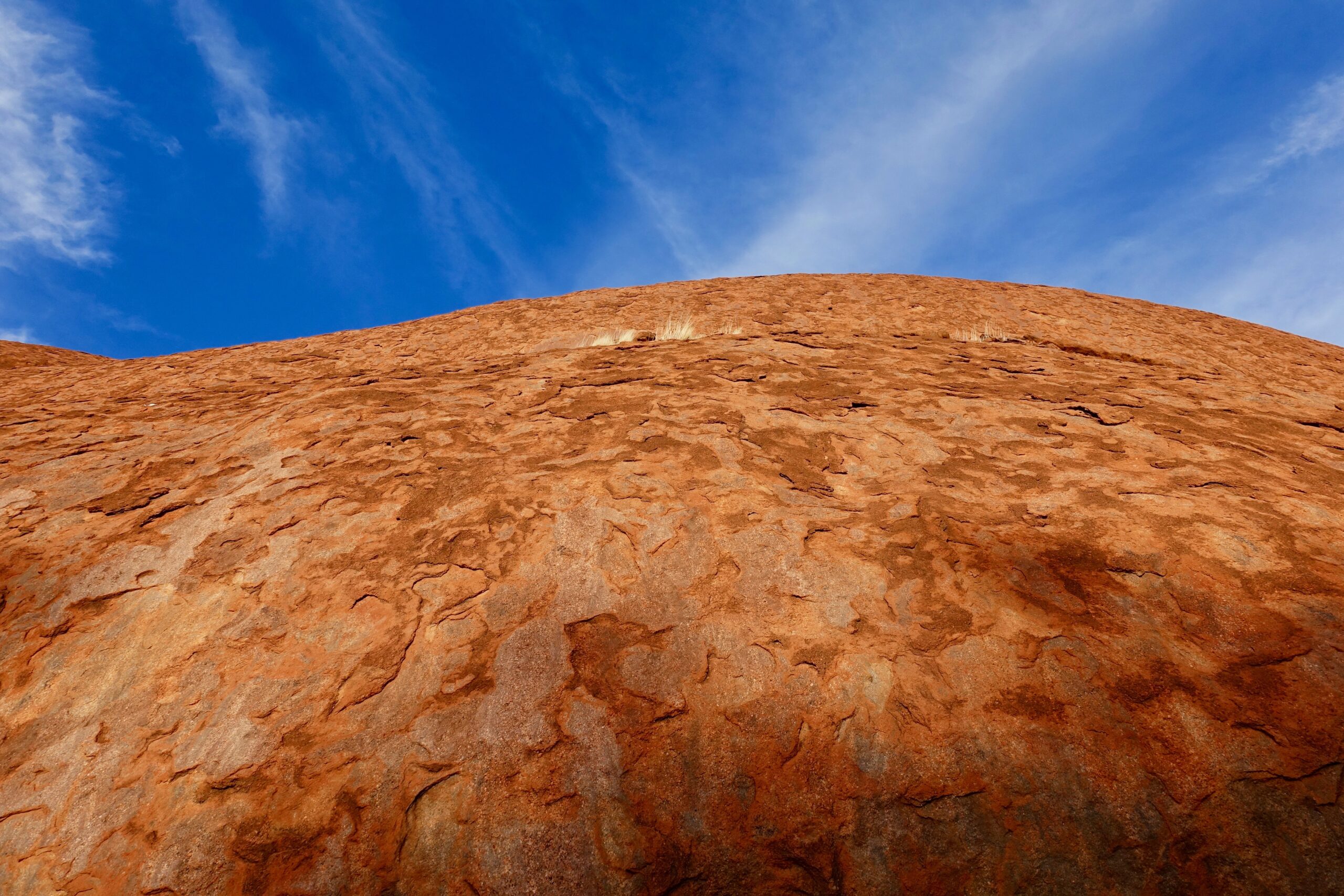
Il faut savoir que les aborigènes représentent une des plus anciennes civilisations au monde ! Il y avait plus de 250 différentes cultures et langues aborigènes qui s’étaient établies en fonction des différentes biodiversités qui les entouraient. La conception identitaire des aborigènes est crucialement liée à leurs terres dont ils sont inséparables. Tout paysage de ce territoire est riche d’histoires ancestrales et a énormément de sens pour eux. Ces légendes dépeignent l’histoire de ces peuples ainsi que leur relation éternelle à la terre qui leur appartient. Leur idée de la création du monde est que des « créatures » ont parcourus le territoire, l’ont façonné et leurs esprits sont restés encrées dans ces endroits, c’est l’essence de la vie. Ils se pensent descendants directs de ces « totems » et ont le devoir de protéger cet environnement qu’ils « contrôlent » grâce à leurs cérémonies où ils font sortir cet « essence de la vie » afin de le propager dans l’environnement. Ils appartiennent à la terre.
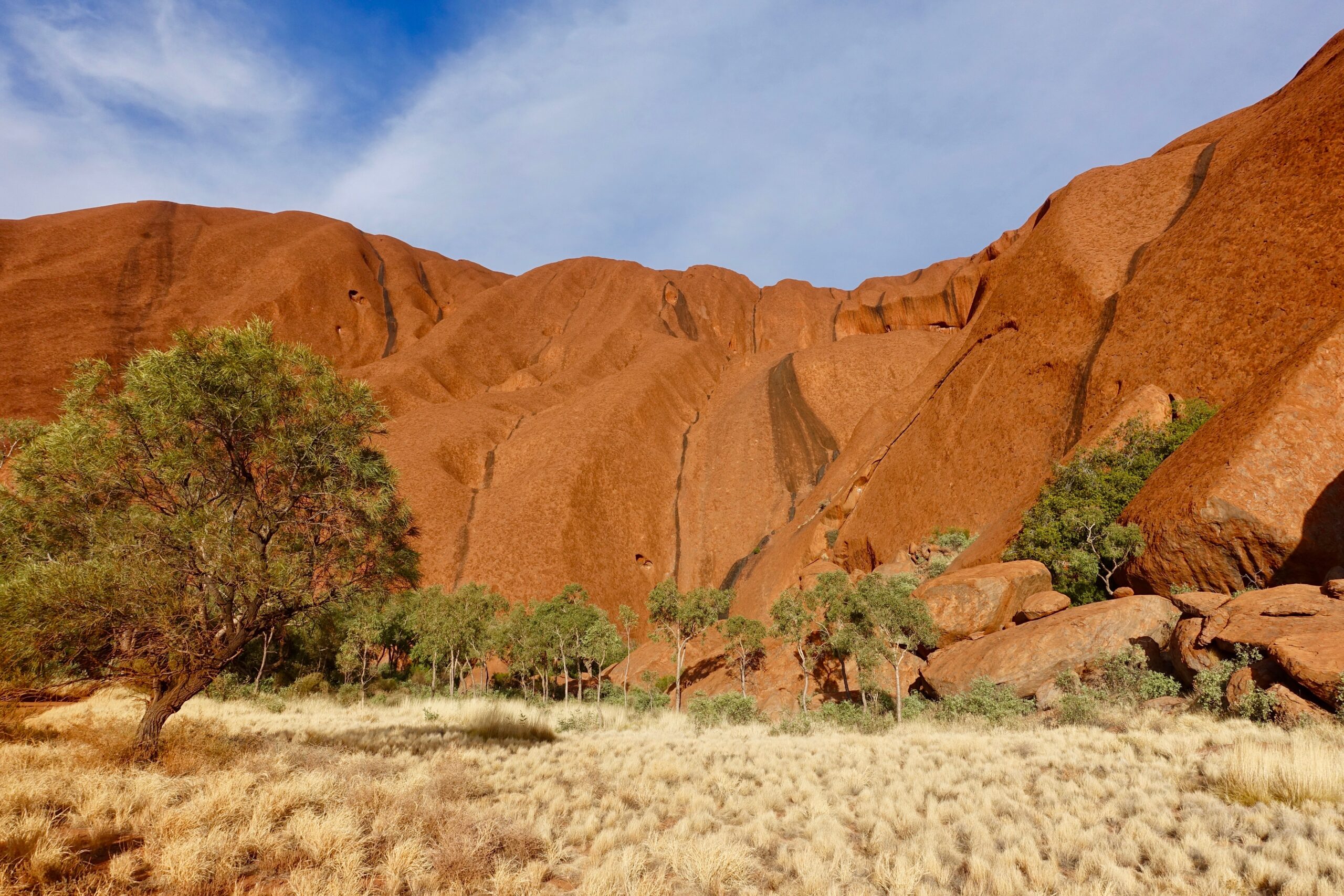
Les aborigènes ont essentiellement une culture orale transmise au travers d’histoires et de chansons. Ces histoires sont transmises à travers les générations afin d’assurer leur perpétration. Elles sont tenues secrètes. Les initiés doivent faire leurs preuves en partant seuls dans le désert grâce aux comptines qui agissent en réalité comme des cartes du territoire. Ils suivent les pas de « l’Être Créateur ». Seuls les survivants sont dignes, culture stricte oblige puisque les conditions de vie là-bas sont difficiles !
Pour le dîner, nous sommes allés admirer le coucher du soleil sur Uluru depuis un point de vue. Nous avons cuisiné des nouilles au poulet avec des légumes. Le rocher parait rouge-orangé lorsque le soleil se couche.
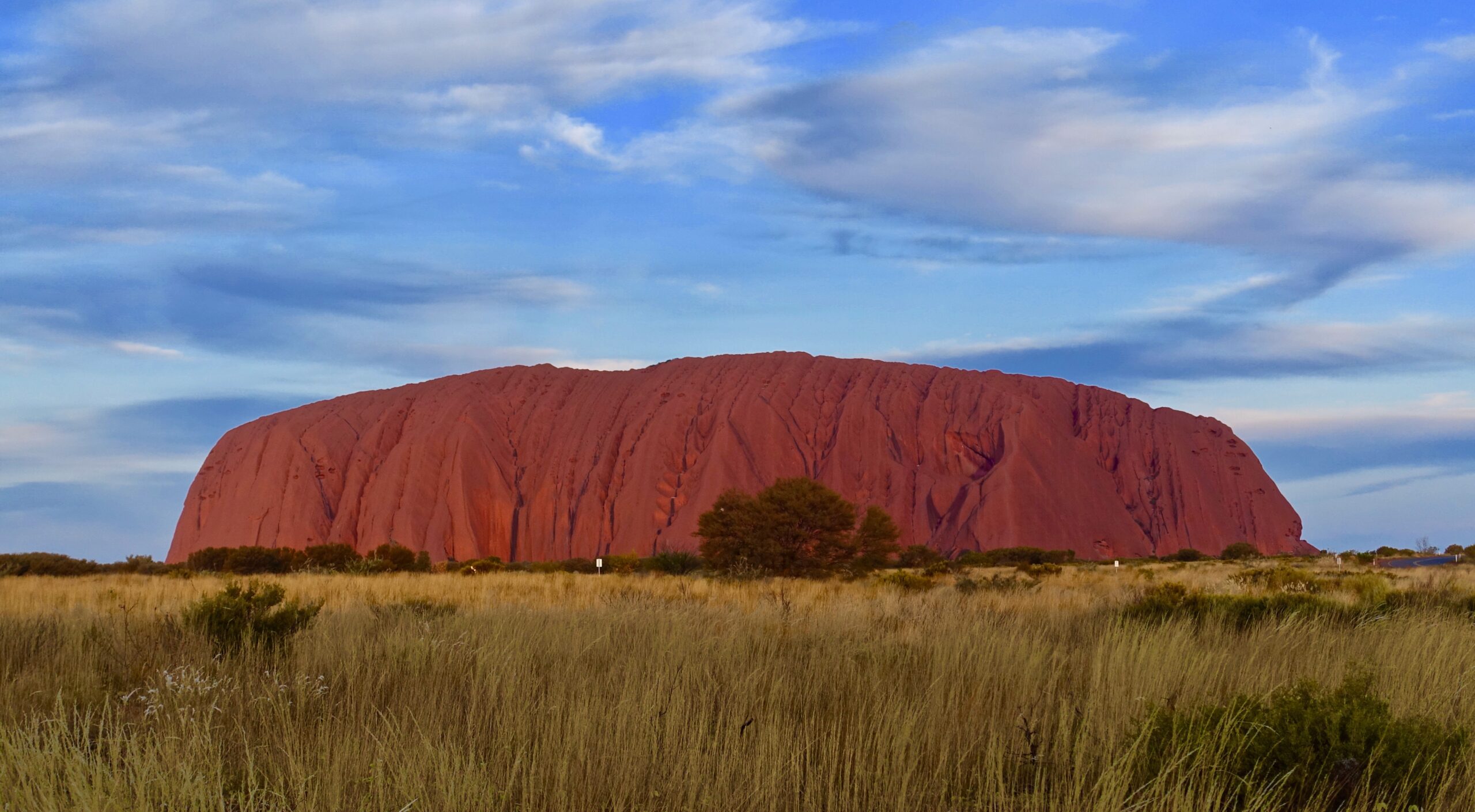
Le soir, pour $50 supplémentaires, il est possible de se rendre à l’exposition « Field Of Lights » créée par l’artiste Bruce Munro. Il s’agit d’un spectacle visuel de plus de 50 000 lampes solaires éclairés de différentes couleurs dispersées, sur une surface d’environ sept terrains de football, au pied d’Uluru.
Nous sommes arrivés au camp et avons préparé nos « swags » pour la nuit. Andrew nous a montré comment les dérouler et aussi les enrouler afin d’être plus efficace et rapide le matin au réveil ! Un swag est une sorte d’hybride entre une tente et un sac de couchage, il contient également un matelas.
Une fois le tutoriel terminé, nous avons pu nous doucher et recharger nos électroniques, puis nous nous sommes tous regroupés autour du feu à discuter et griller nos chamallows dans une bonne ambiance !
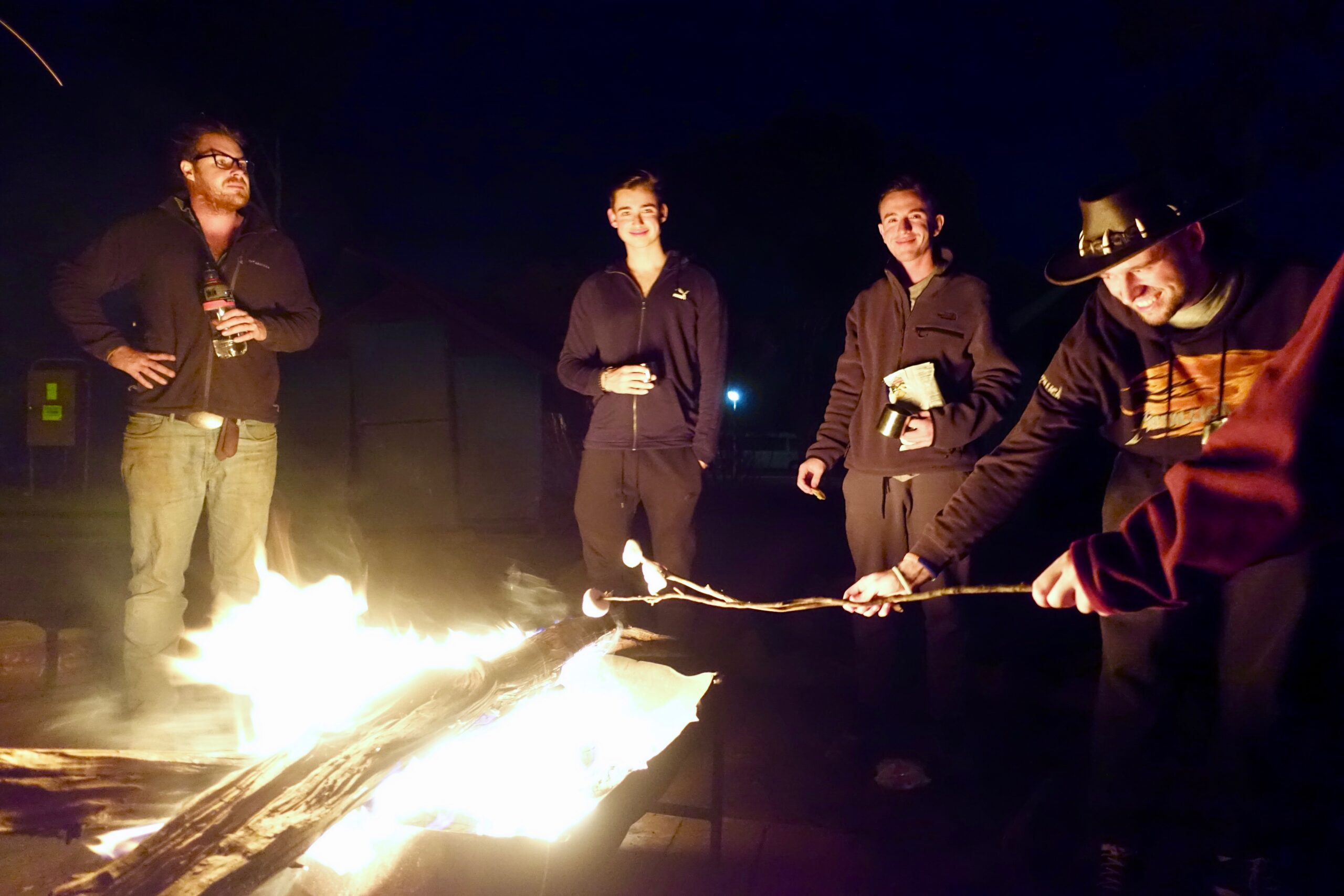
Jour 2 – Kata Tjuta
Le matin, nous nous sommes réveillés tôt afin d’aller prendre notre petit déjeuner et admirer le lever du soleil au pied d’Uluru. Les reflets violets sur le rocher étaient tout simplement incroyables, bien qu’il fît un peu froid si tôt le matin dans le désert !
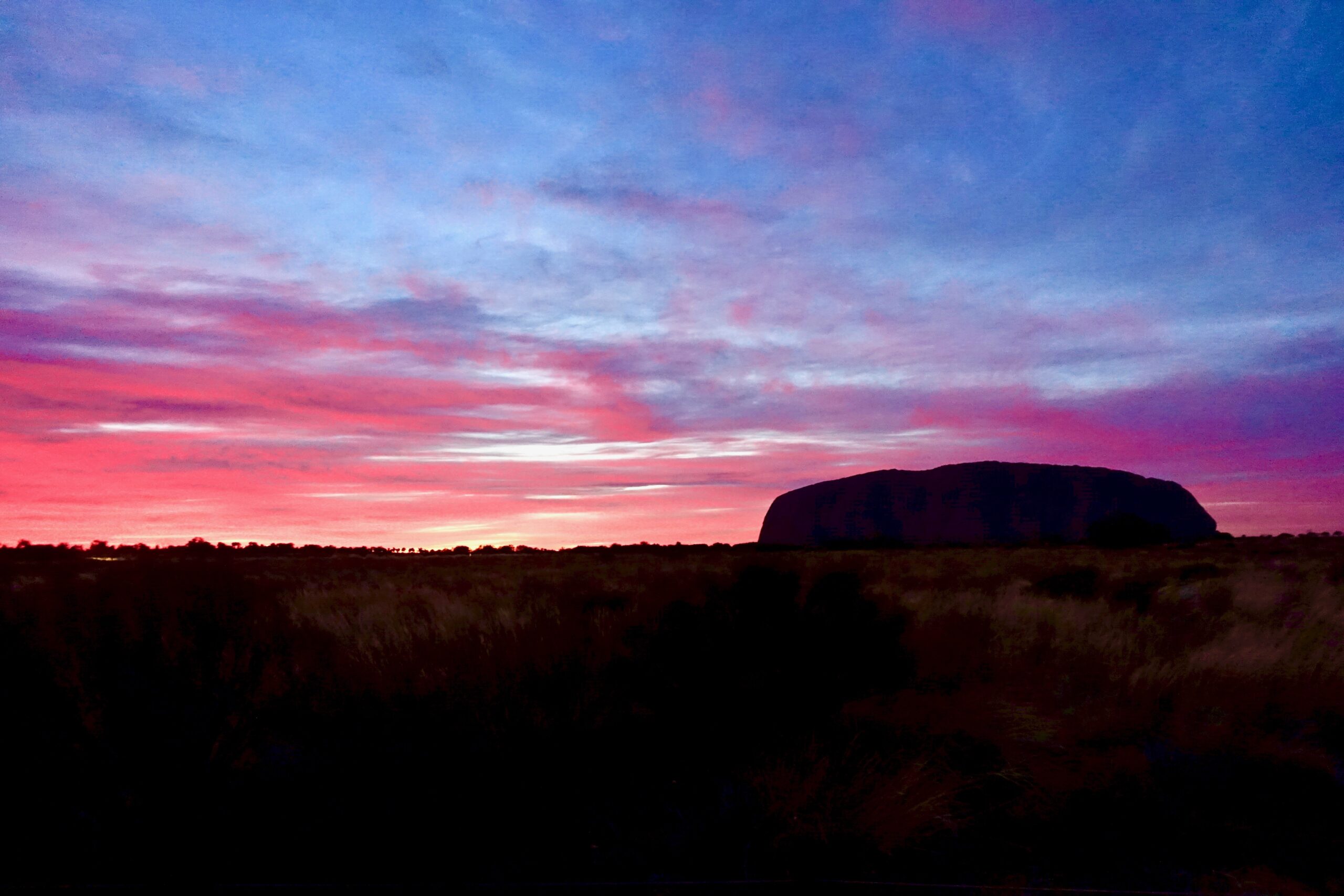
Nous avons ensuite conduit jusqu’à Kata Tjuta, « la vallée des vents ». Kata Tjuta est un groupement de 36 dômes fait de multiples types de roches. Ce lieu mystérieux également sacré semble être tenu plus secret. Il est bien différent du site d’Uluru !
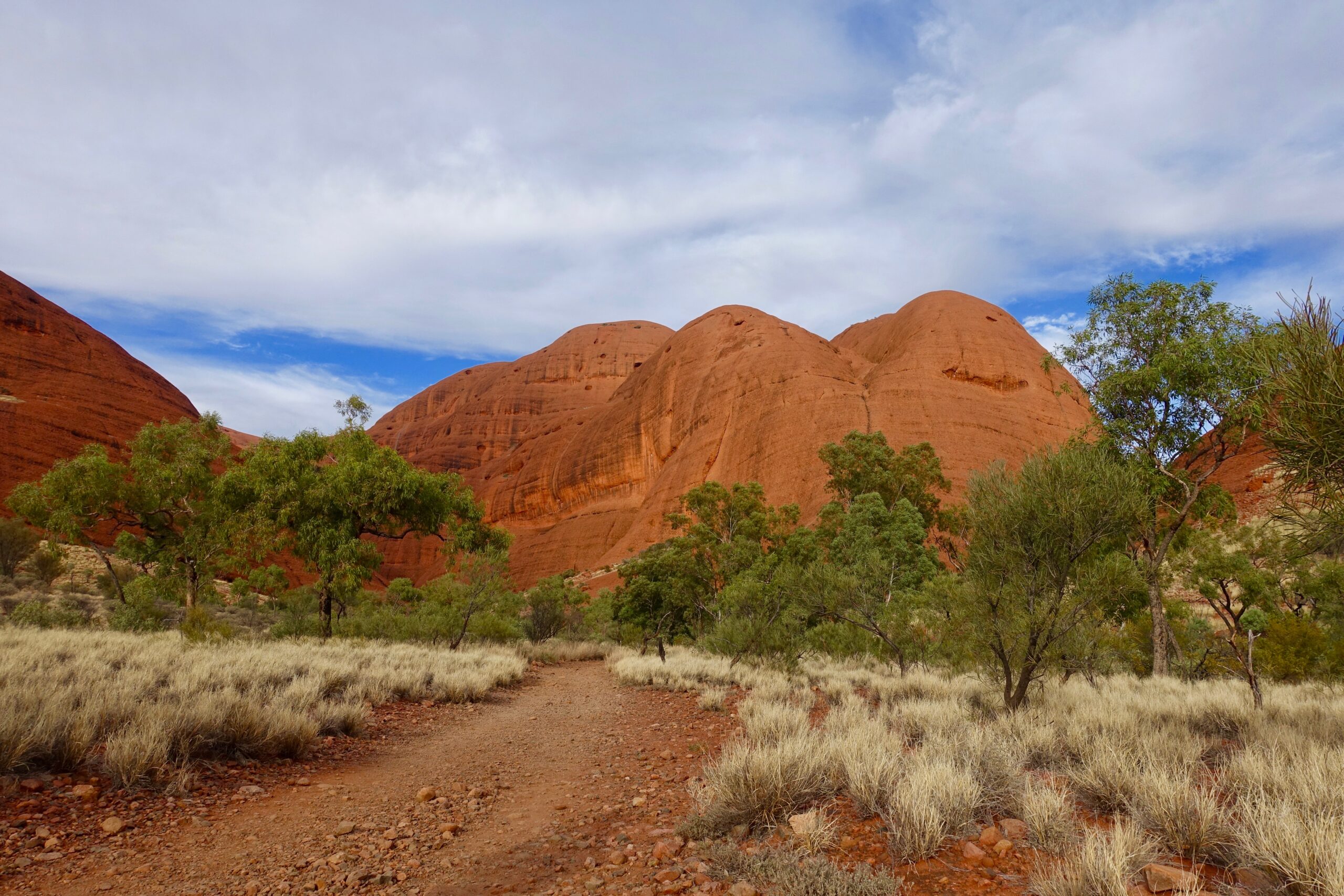
Nous avons eu amplement de temps pour faire le tour de la partie touristique du site.
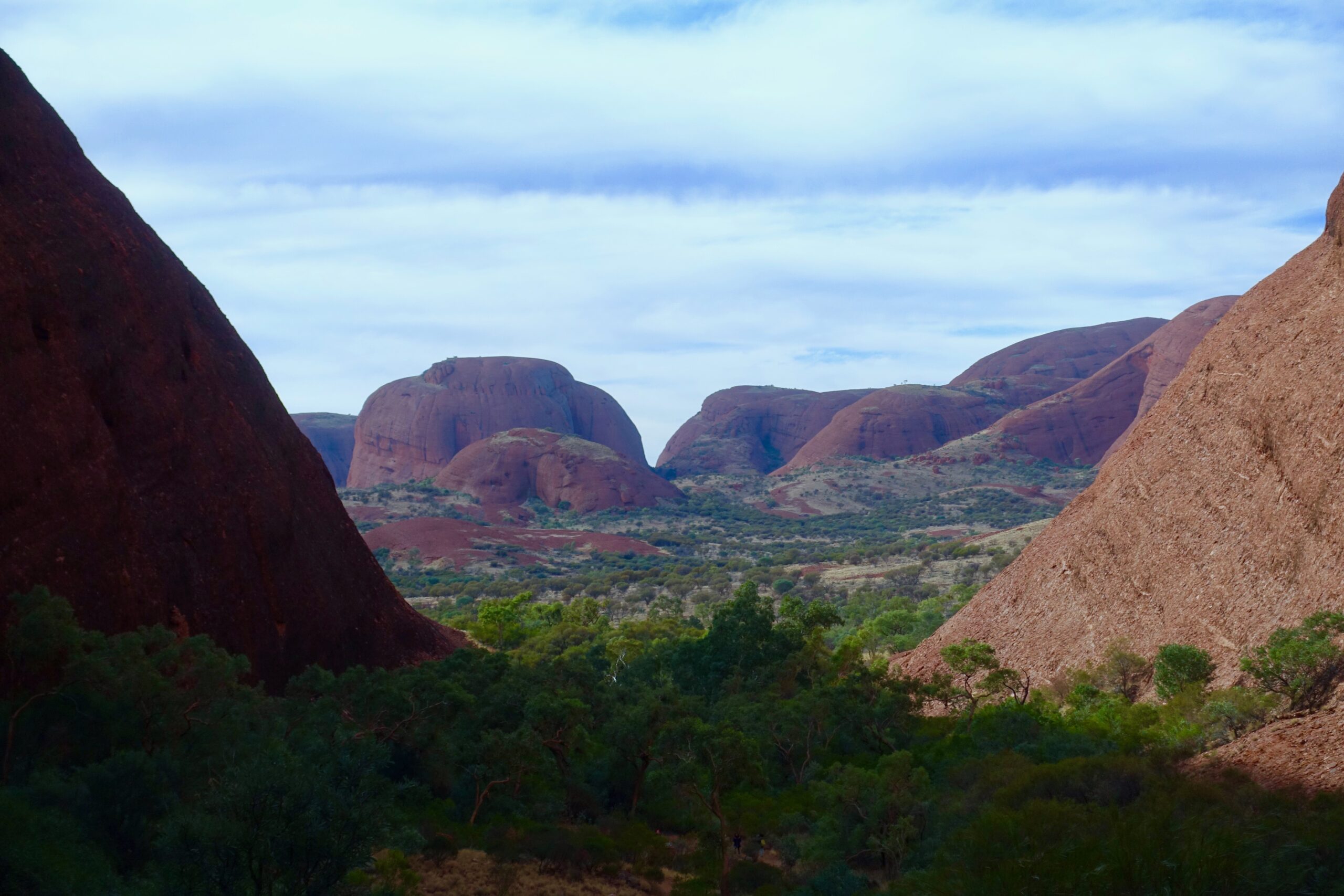
La marche est légèrement plus difficile car le terrain est escarpé, mais les vues sont à couper le souffle !
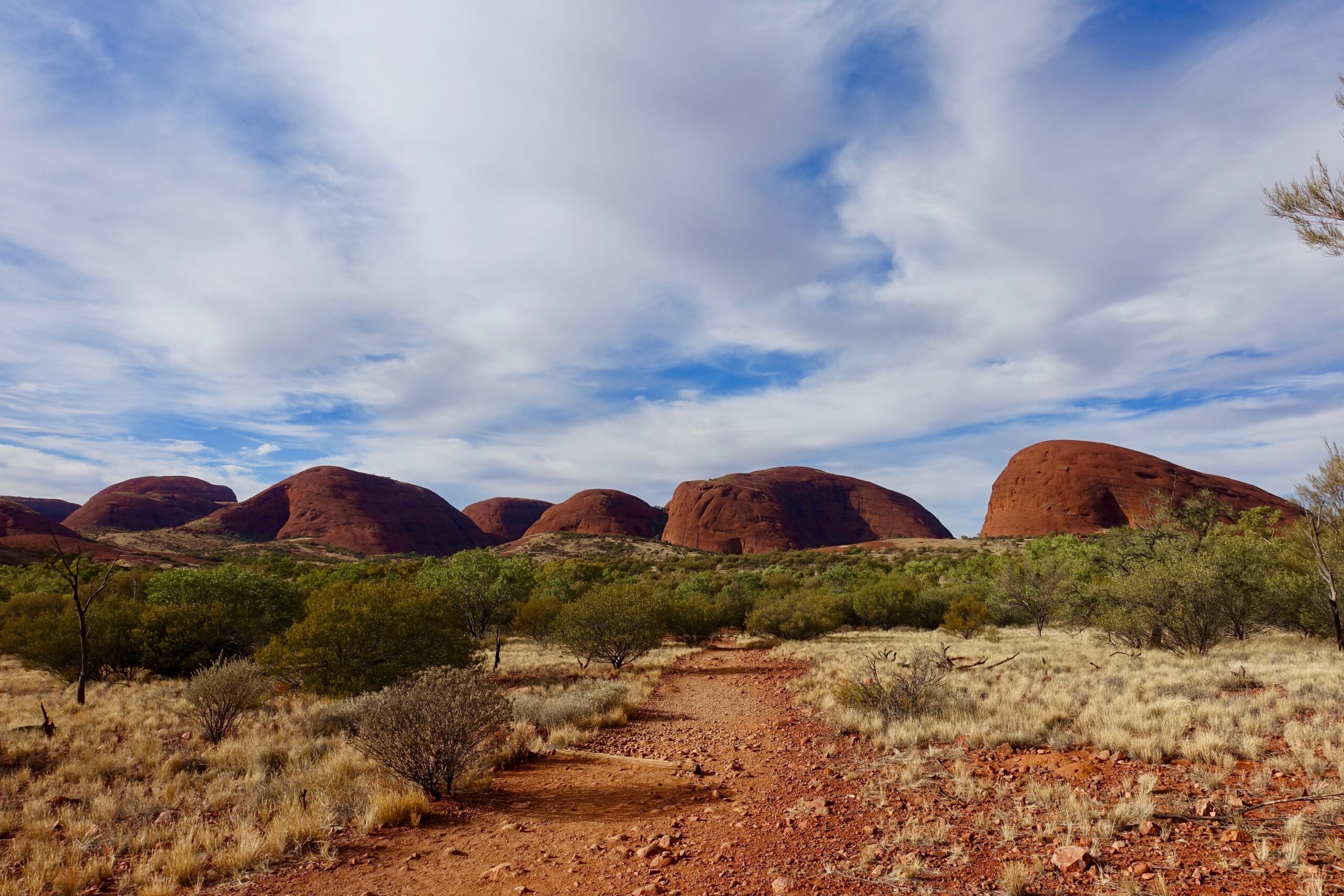
Le point culminant de Kata Tjuta est à 546 mètres.
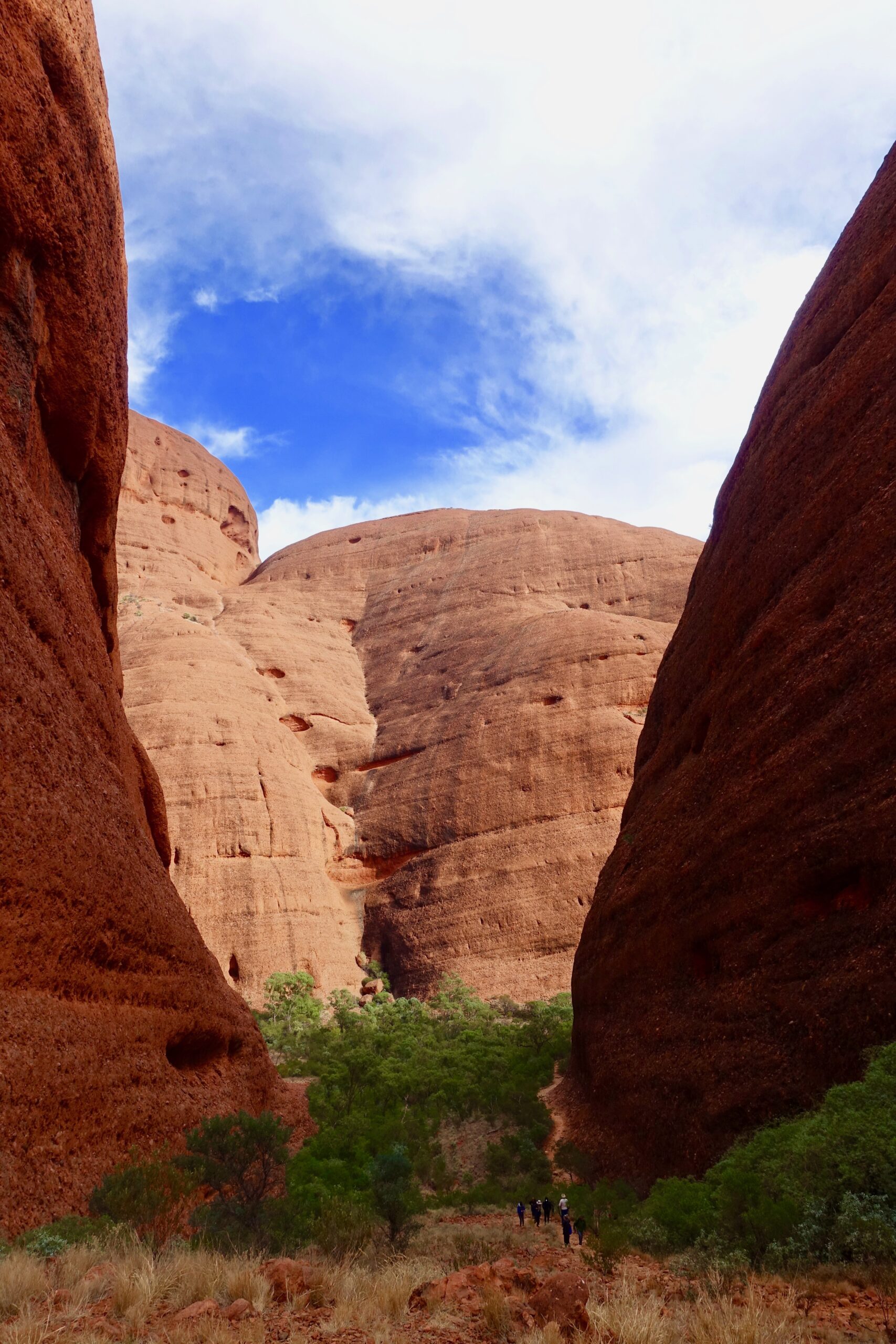
La végétation aux alentours parait plus luxuriante et le chemin passe entre deux dômes ce qui nous permet de prendre de la hauteur pour contempler le paysage.
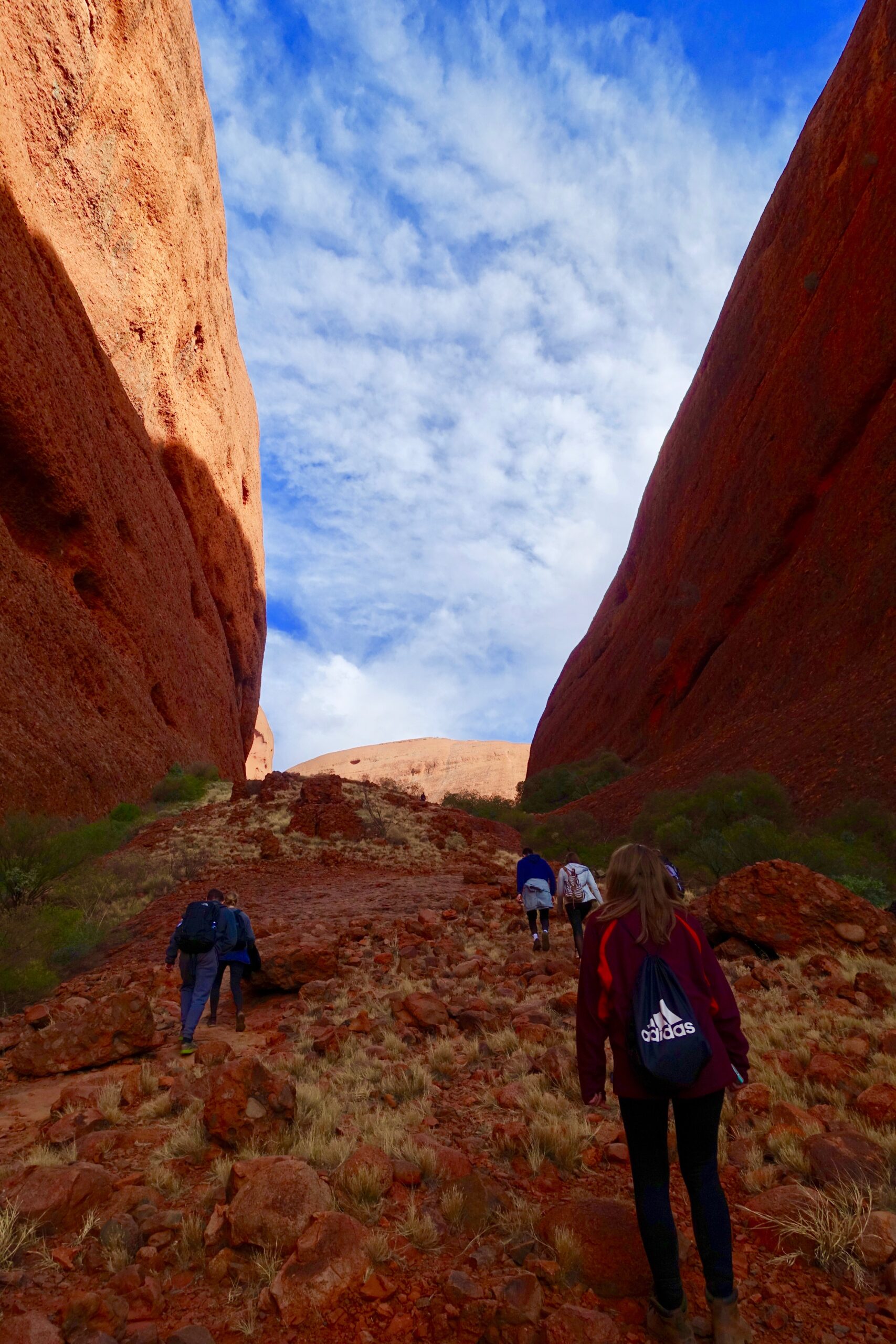
Nous sommes retournés au camp pour déjeuner et le guide nous a annoncé qu’il allait se faire remplacer par un collègue car il se sentait malheureusement trop fatigué pour conduire 21 personnes jusqu’à Alice Springs en toute sécurité.
Nous avons donc rencontré Jérôme, un guide enthousiaste et plein d’énergie ! Jérôme a repris les rênes du tour, nous sommes donc tous montés dans le bus et il a débuté le trajet vers Kings Canyon. En chemin, il nous a raconté pleins d’anecdotes intéressantes au micro sur : la région, le désert, les aborigènes la faune et la flore locale.
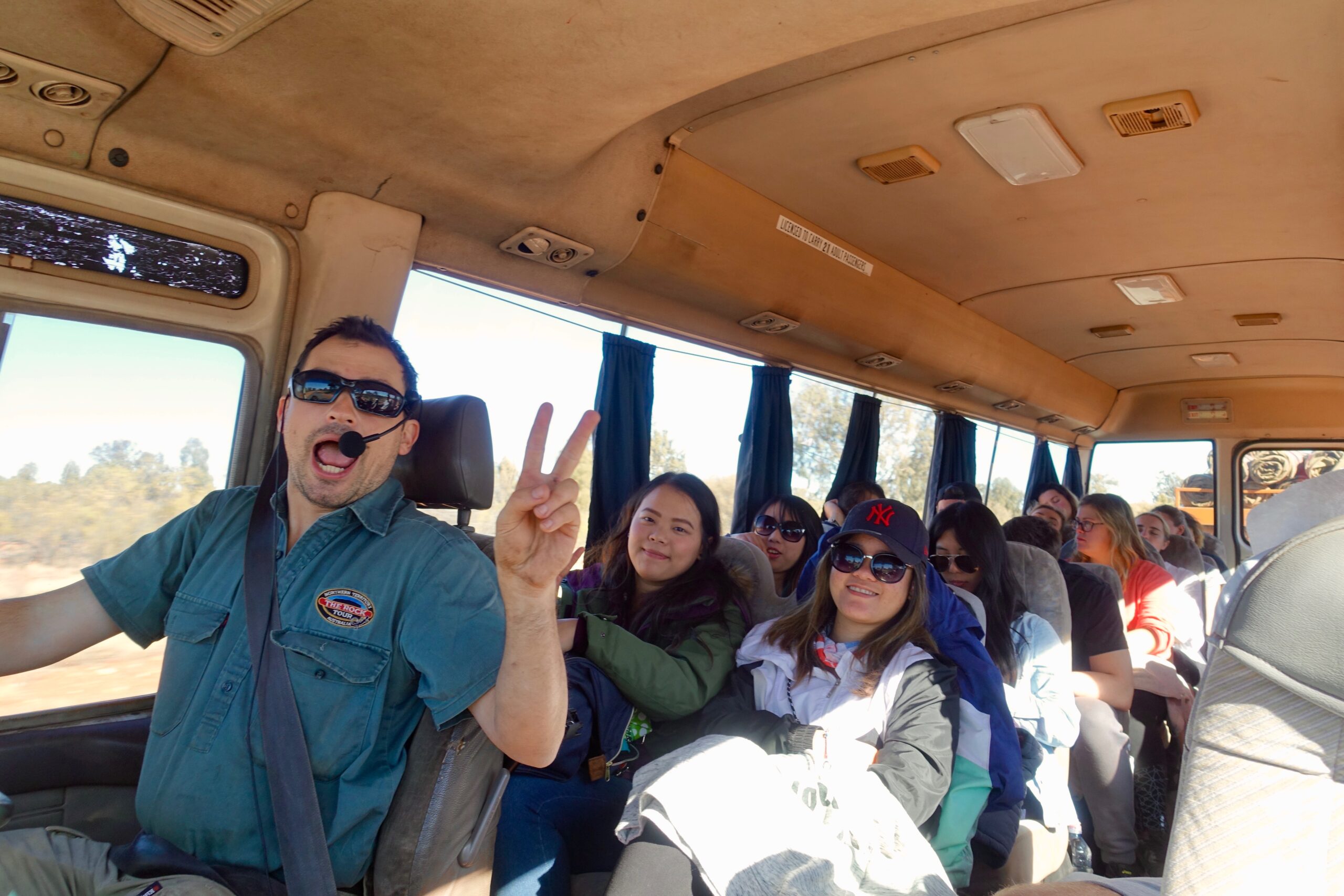
Nous avons fait une halte en chemin où nous avons pu grimper une dune de sable rouge qui donnait vue sur un vaste lac de sel et un autre monolithe au loin, semblable à Uluru, qui s’appelle Attila ou « Mount Conner ».
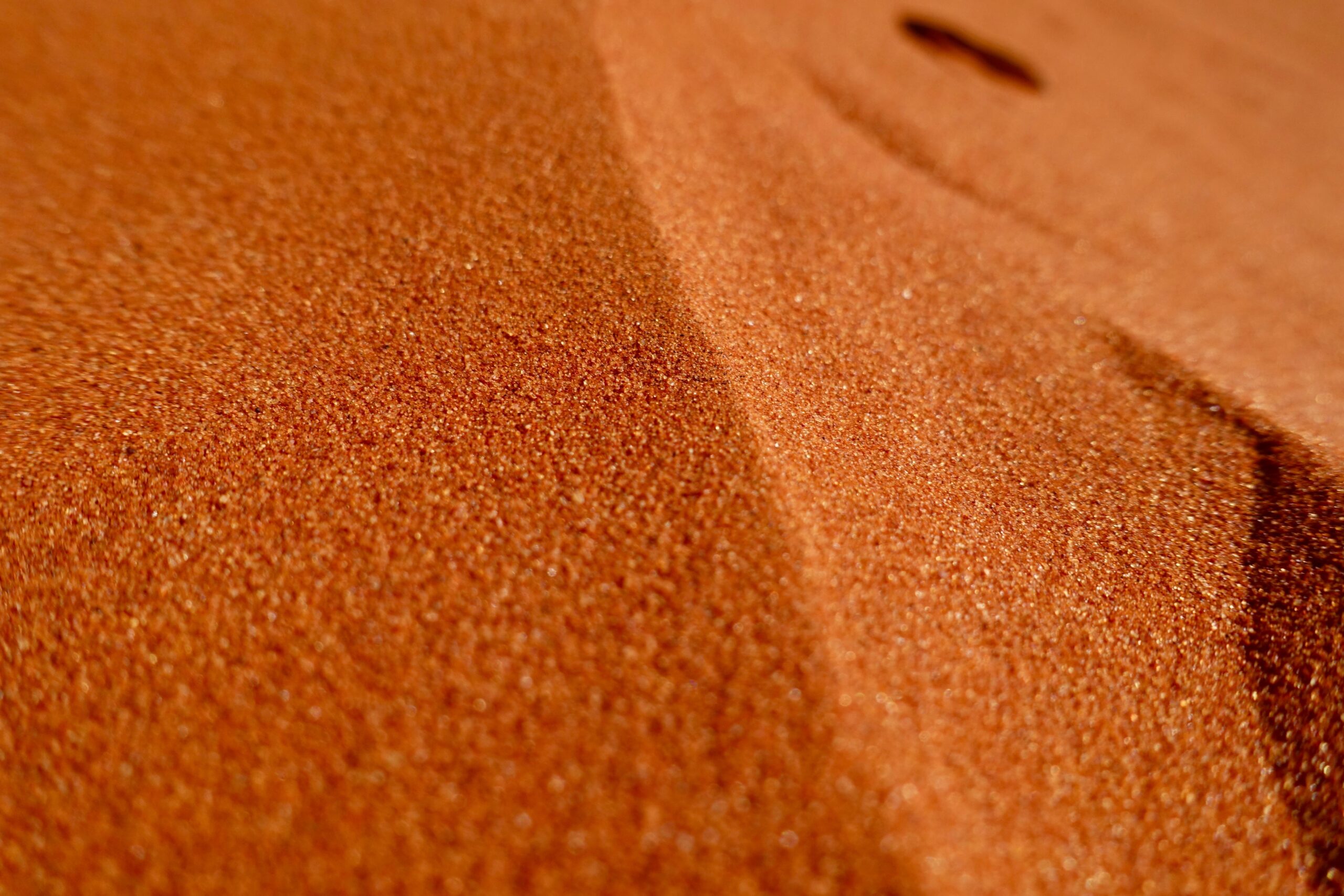
Sur la route, nous avons également croisé un couple d’aigles d’Australie (appelé the « wedge-tailed eagle »), un dingo et un troupeau de chevaux sauvages (appelés « brumbies »).
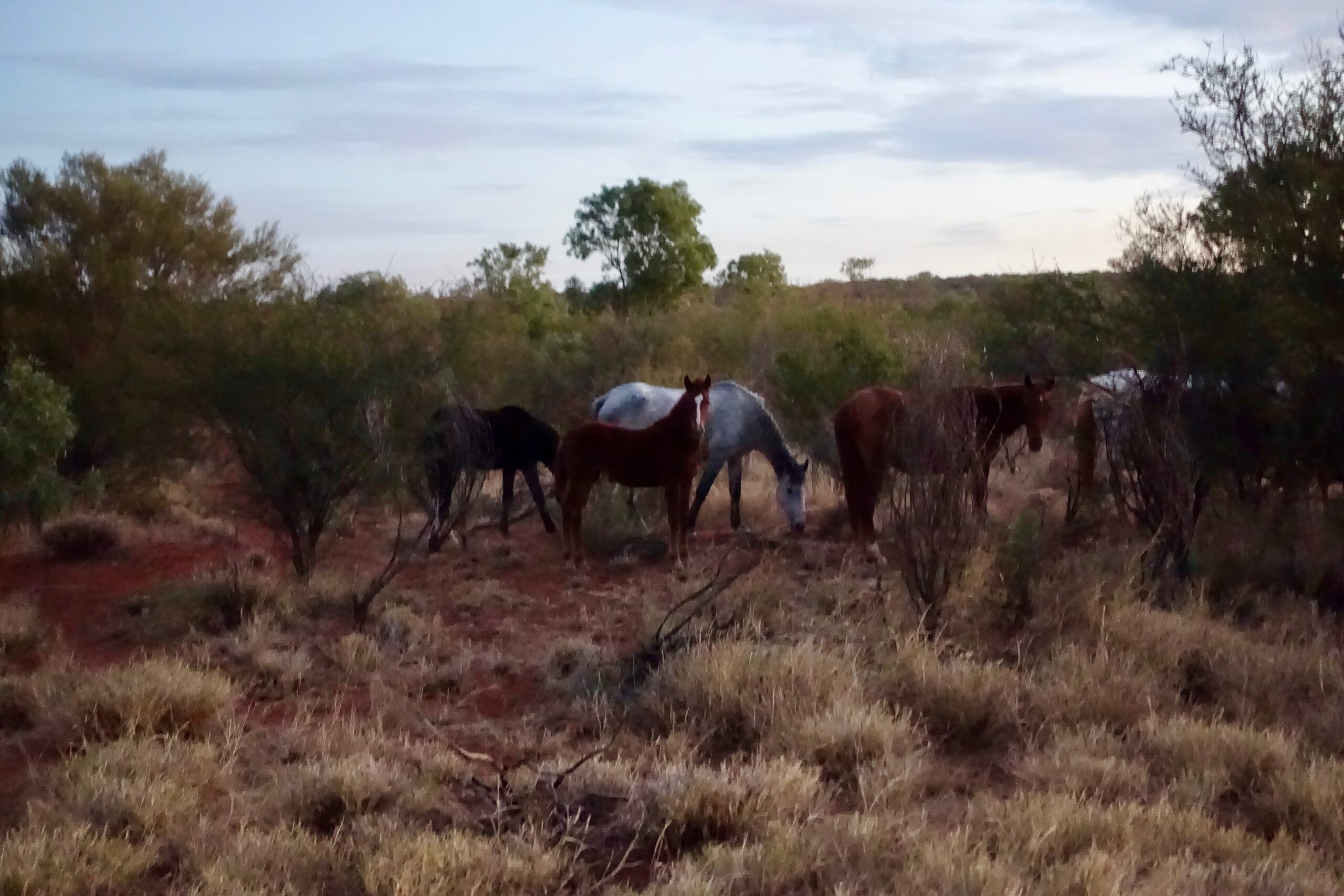
On s’est également arrêtés au bord de la route pour ramasser du bois pour le feu, cette activité de groupe était bien divertissante et nous a donné l’occasion de nous étirer les jambes après tout ce trajet.
En conduisant, nous avons pu contempler le magnifique coucher du soleil, le ciel paraissait d’autant plus immense que d’habitude, les nuages étaient peints par les reflets du soleil, et l’ombre des arbres donnait de la profondeur à cette image incroyable
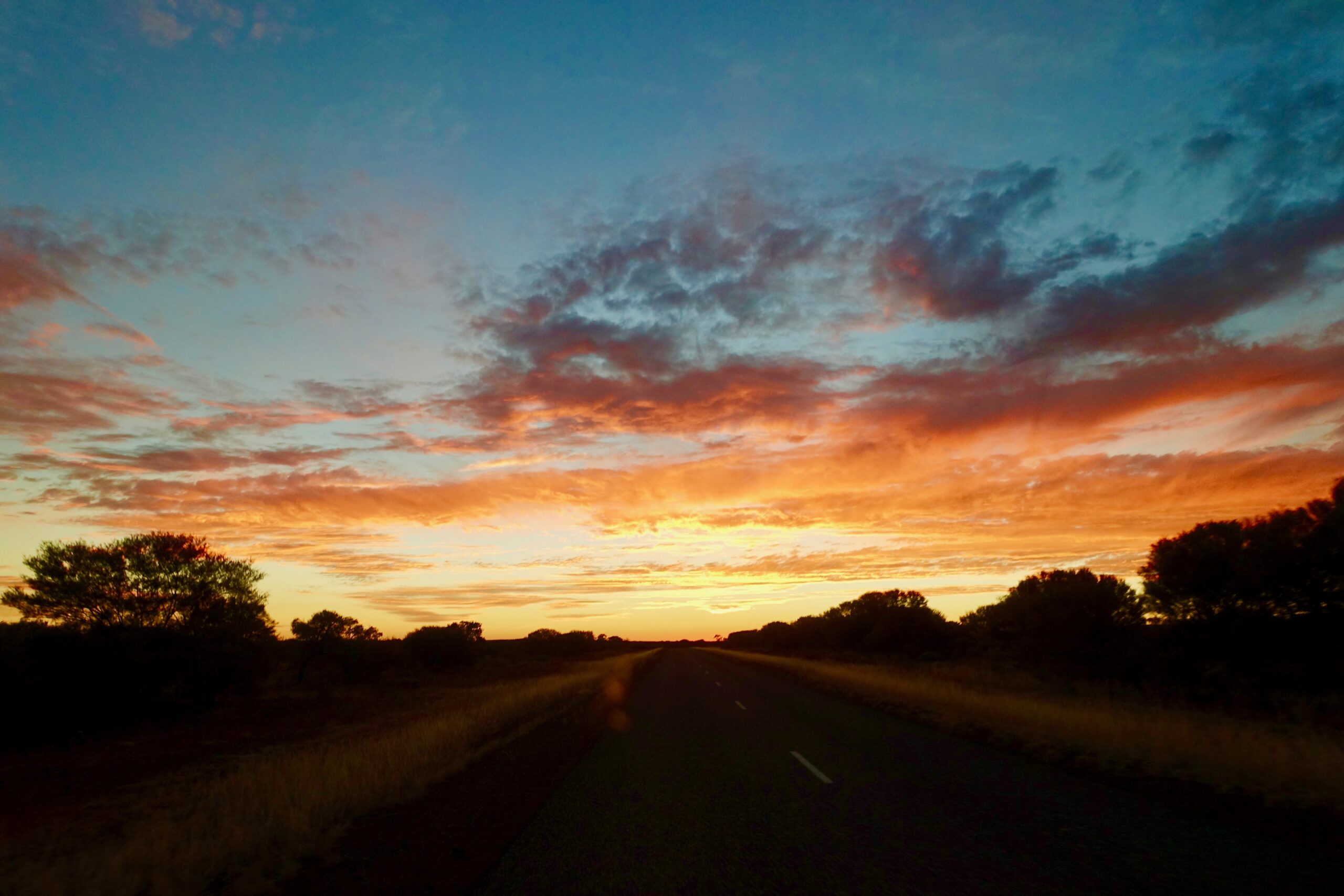
Nous sommes arrivés au camp appelé Kings Canyon Creek. Nous nous sommes tous activés pour faire un feu, préparer nos swags et cuisiner un délicieux chili con carne ainsi qu’un pain maison, le tout cuit sur le feu de bois !
Cette soirée fut très conviviale, remplie d’histoires, de jeux et de blagues. A l’heure du coucher, Jérôme nous a vivement conseillé de cacher nos chaussures dans nos swags pour éviter qu’un dingo ne nous les vole !
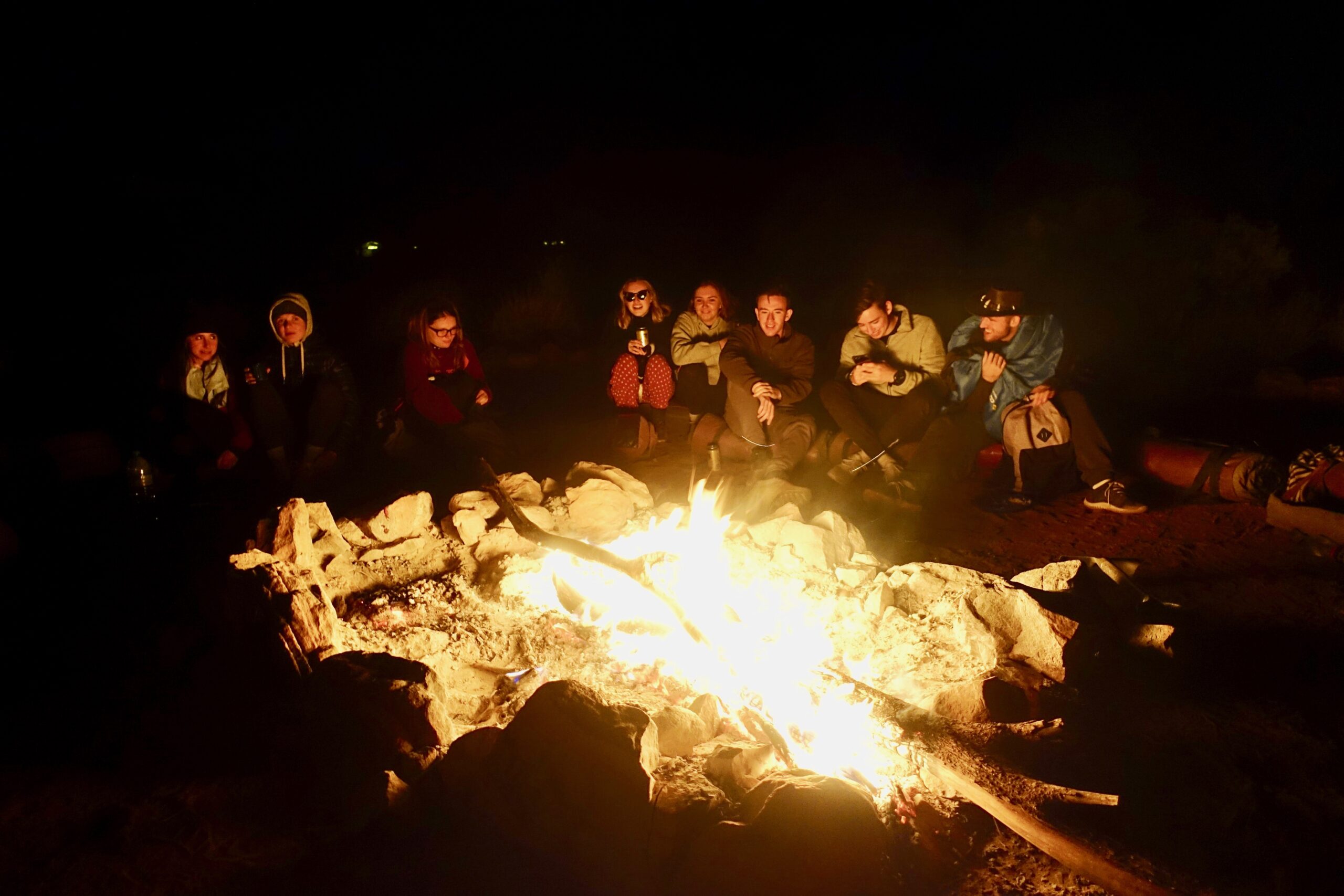
Jour 3 – Kings Canyon
Au réveil, nous avons rallumé le feu et pris notre petit déjeuner avant de conduire jusqu’à Kings Canyon. La première partie de la marche (trois heures au total) consistait à grimper une grande pente pour arriver au sommet du canyon.
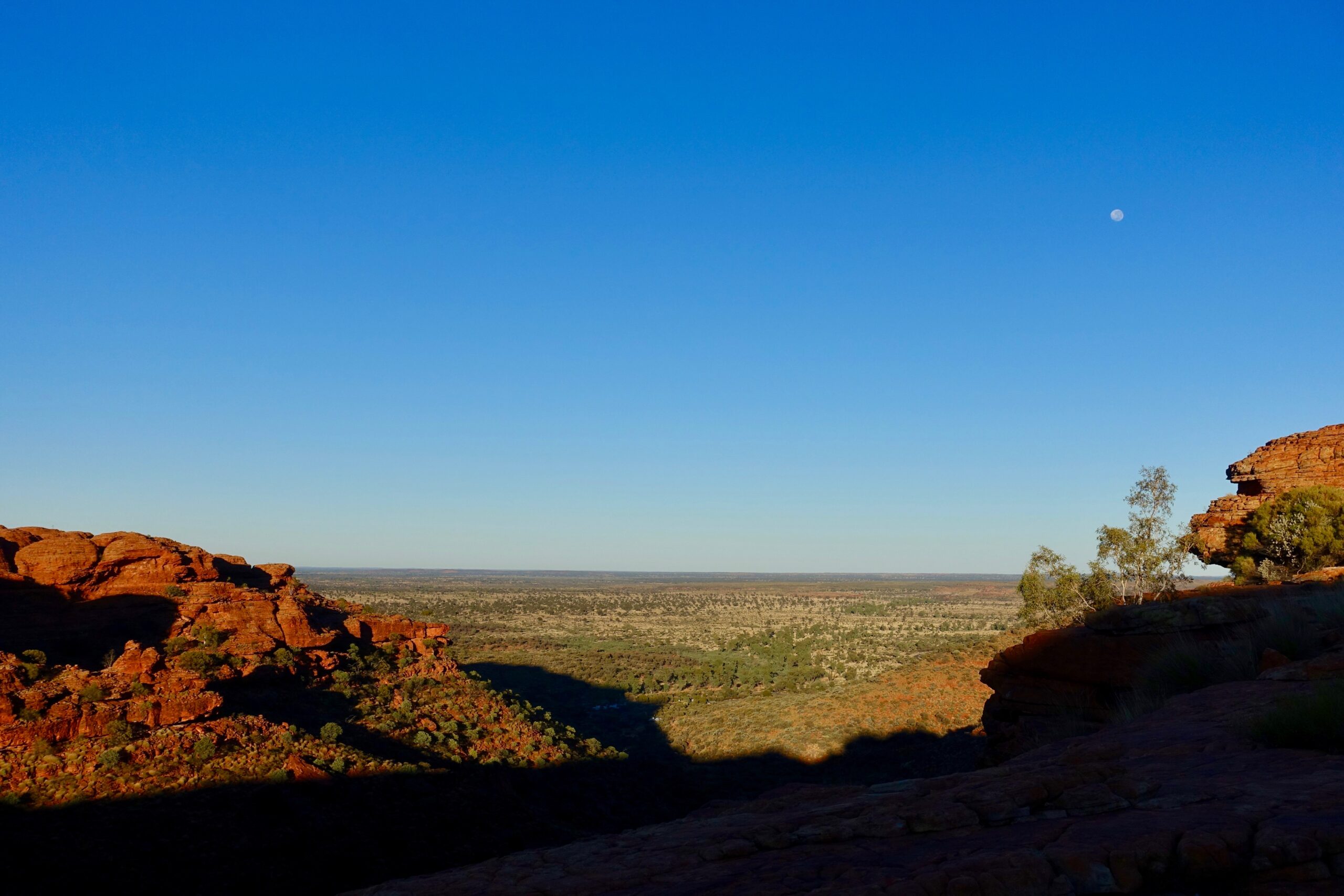
C’était la partie la plus difficile du tour mais l’effort physique en valait bien la peine ! Les vues étaient saisissantes, on pouvait encore voir la lune et les couleurs du lever du soleil.
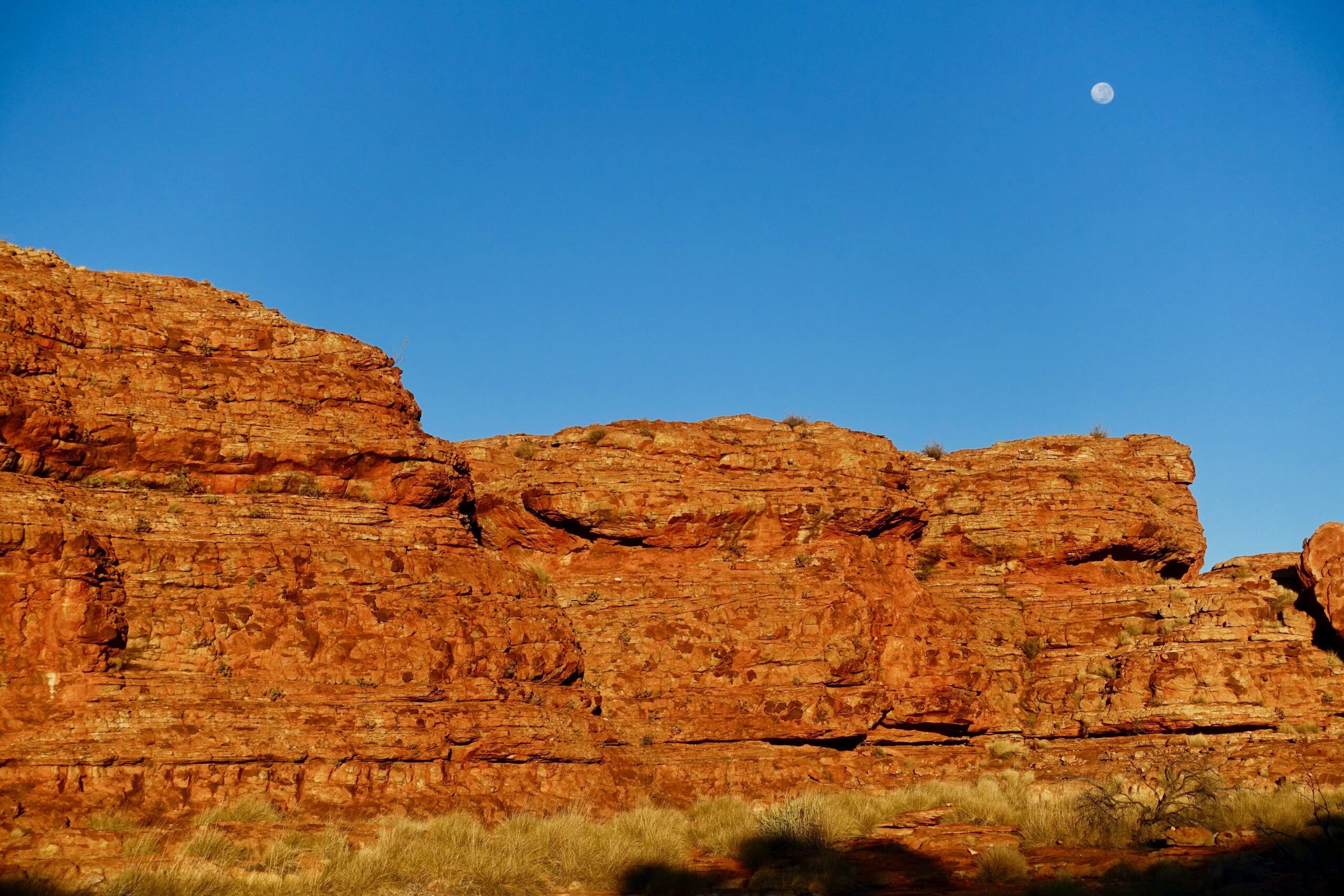
Marcher tout autour du rebord du canyon était impressionnant !
Nous sommes également descendus dans une crevasse du canyon pour aller voir le Jardin d’Eden, une oasis d’eau bordé d’une végétation luxuriante.
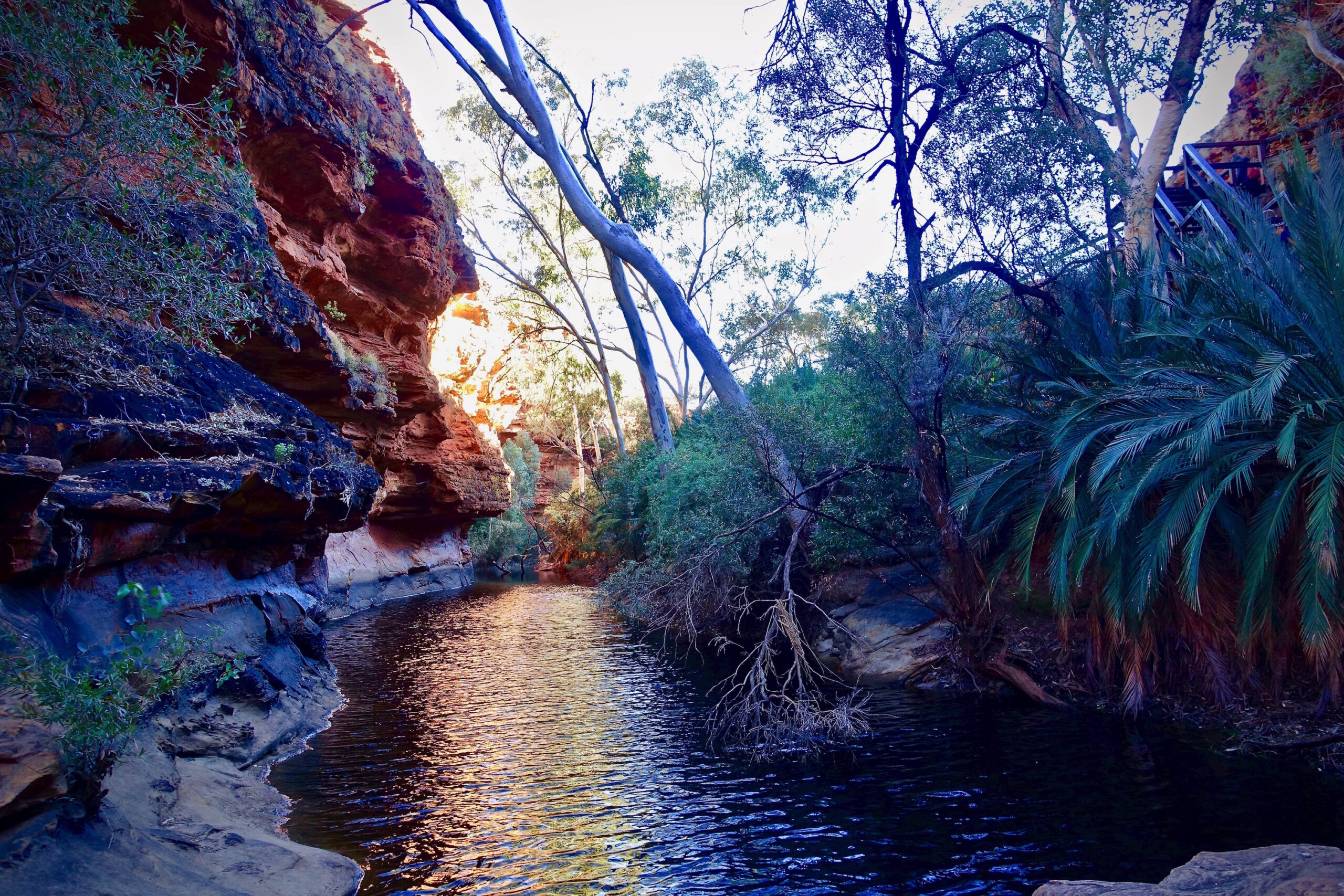
Nous en avons profité pour grignoter à mi-chemin pour ensuite continuer la marche. Kings Canyon parait immense, et la large crevasse est effrayante car il est possible de s’approcher -en toute précaution- du bord.
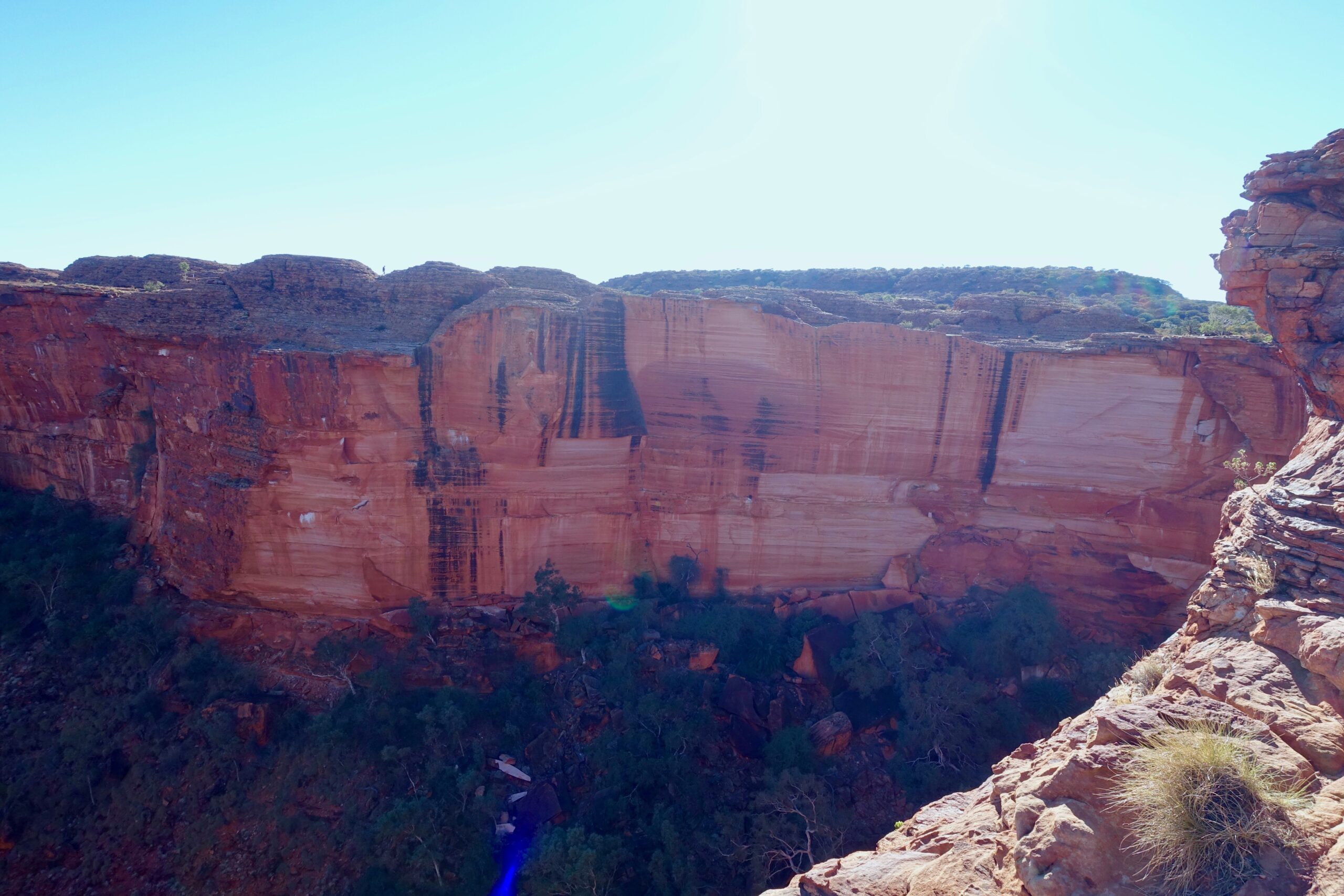
A la fin du tour, nous avons pris la route jusqu’à Alice Springs et nous nous sommes arrêtés pour prendre notre dernier déjeuner.
Quelques kilomètres avant Alice Springs, nous avons fait une halte pour visiter une ferme de chameaux (plus précisément des dromadaires). Il faut savoir qu’il y a une grande population de chameaux dans le désert Australien qui ont été introduits par les Afghans lorsque le chemin de fer allant d’Adélaïde à Darwin a été construit.
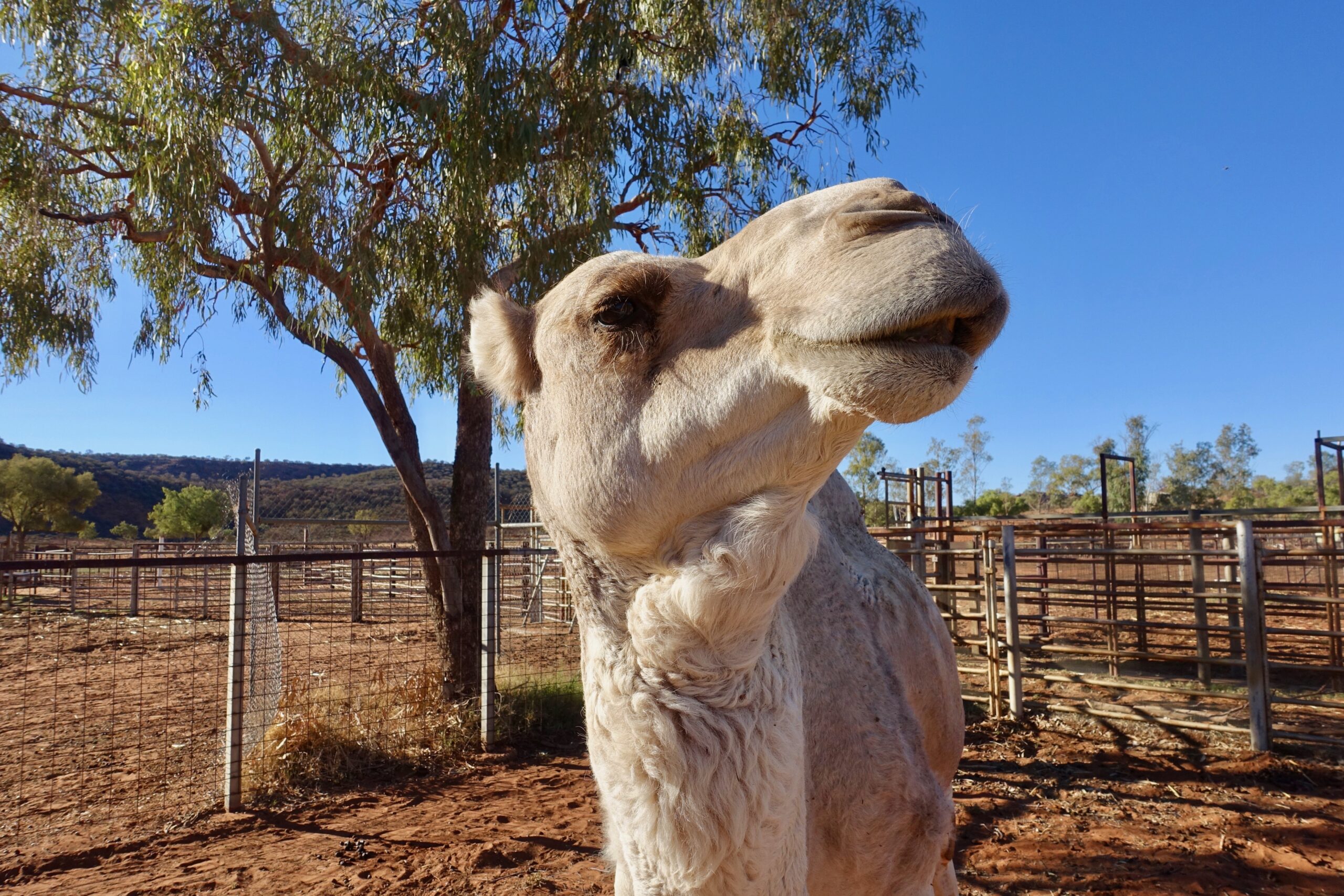
Il existe même une fameuse course de chameaux dans le désert, la « Camel Cup » ! Nous avons pu faire un petit tour à dos de chameau (marche et trot) pour $8 supplémentaires. Ces chameaux étaient apparemment des chameaux de compétition!
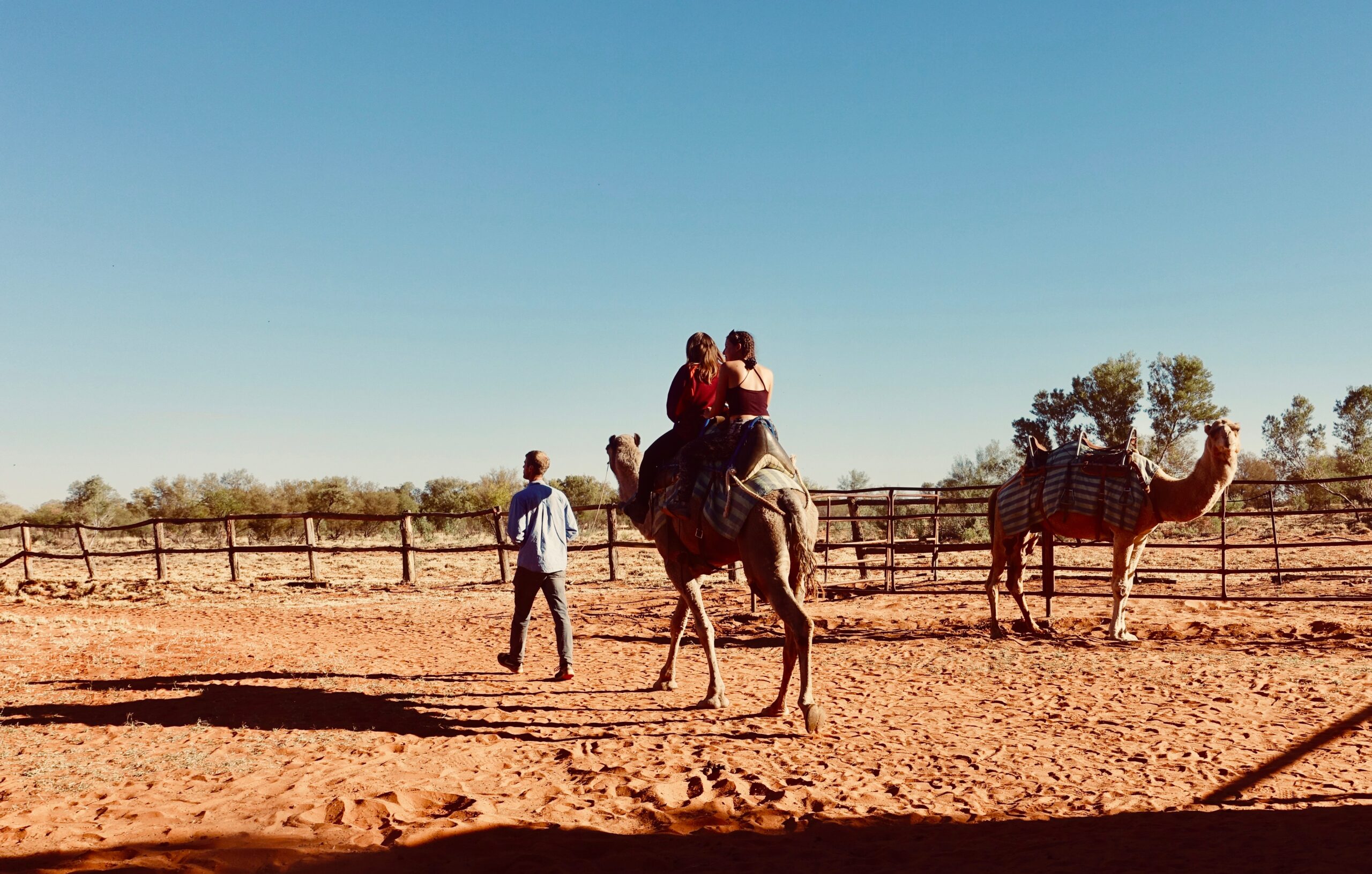
Ensuite, nous avons fait le reste du chemin en bus jusqu’à Alice Springs.
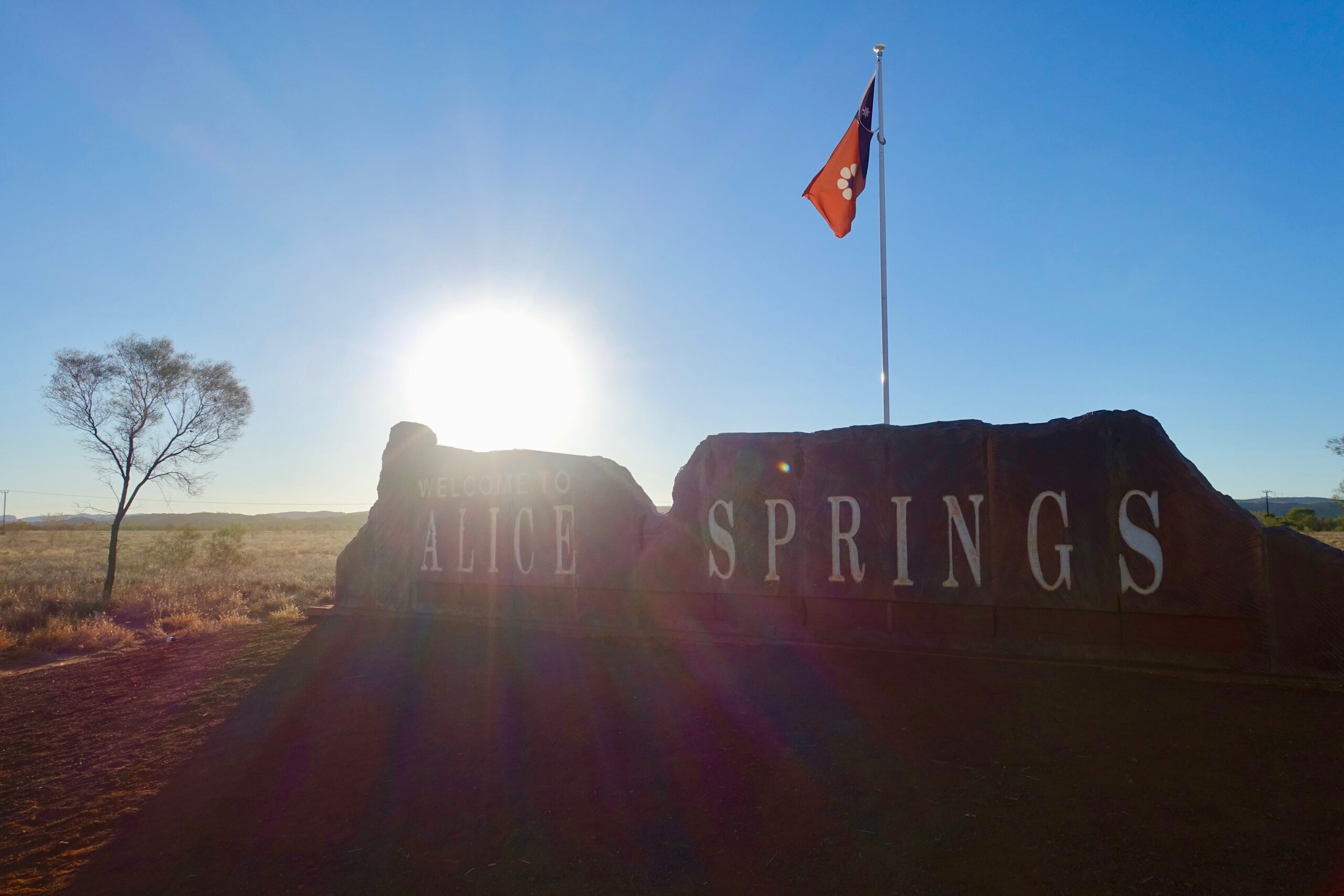
Jérôme a eu la gentillesse de nous amener en haut d’un point de vue sur une colline afin d’avoir un panorama de la ville et de voir le coucher du soleil. Il nous a ensuite tous déposés dans nos auberges de jeunesse respectives, et nous a invité à venir passer une dernière soirée tous ensemble au « Rock Bar » un pub du coin. Nous sommes tous venus, et avons diné dans la joie et la bonne humeur !
*Les passagers ayant réservé un tour de quatre jours ont fait le trajet retour le lendemain, tôt le matin, afin de rentrer directement sur Yulara (près d’Uluru) pour aller à l’aéroport d’Ayers Rock.
Ces trois jours en compagnie des autres voyageurs et des guides de « The Rock Tour » ont été tout simplement merveilleux ! Je m’en suis mis pleins les yeux à admirer les reflets rouge-orangés d’Uluru, Kata Tjuta et Kings Canyon ! Ce voyage a véritablement été à la hauteur de mes attentes. J’ai adoré le côté convivial et aventurier de ce tour, à partager l’expérience avec les autres touristes et à dormir sous les étoiles, à même le sol et auprès du feu dans les fameux swag Australiens. Quant au guide, il était professionnel, bien informé et agréable à écouter. Nous avons pu apprendre beaucoup de choses grâce à lui!
